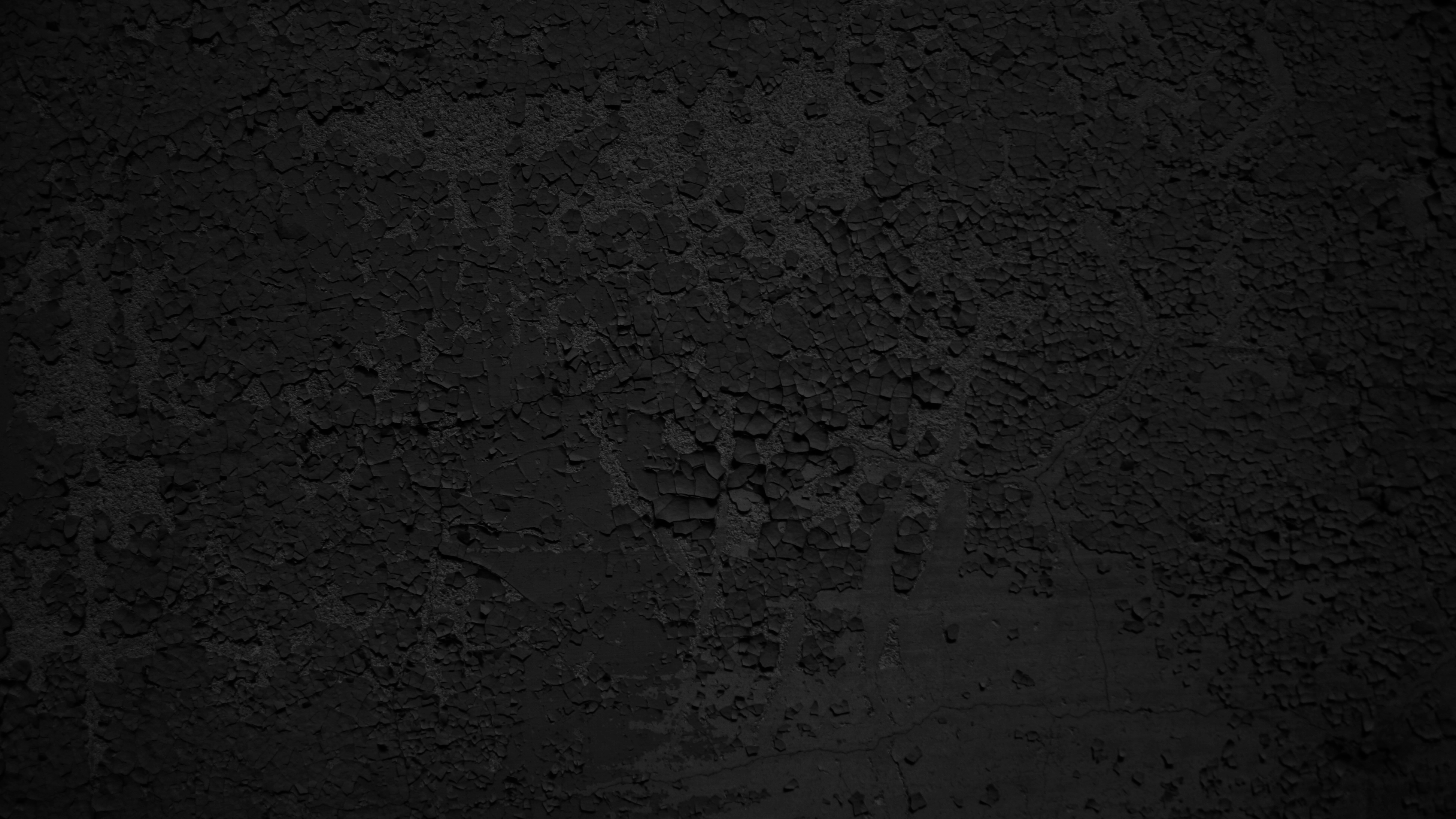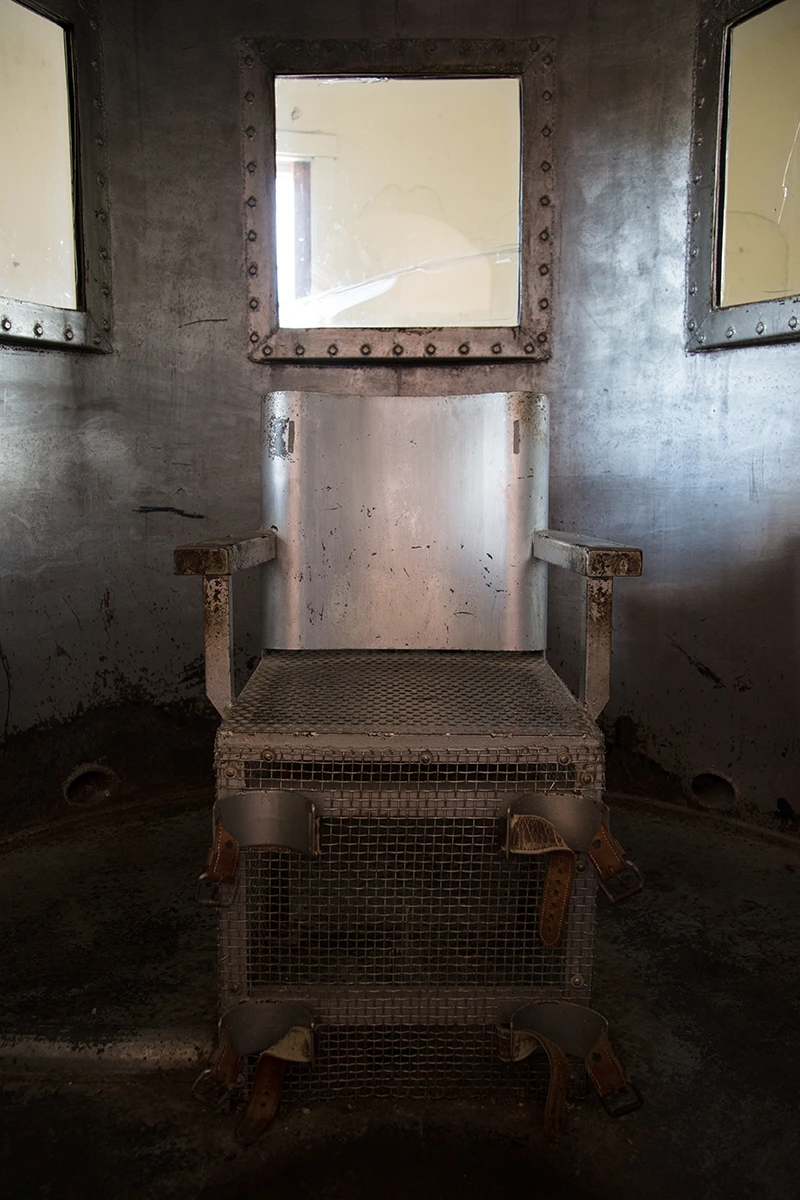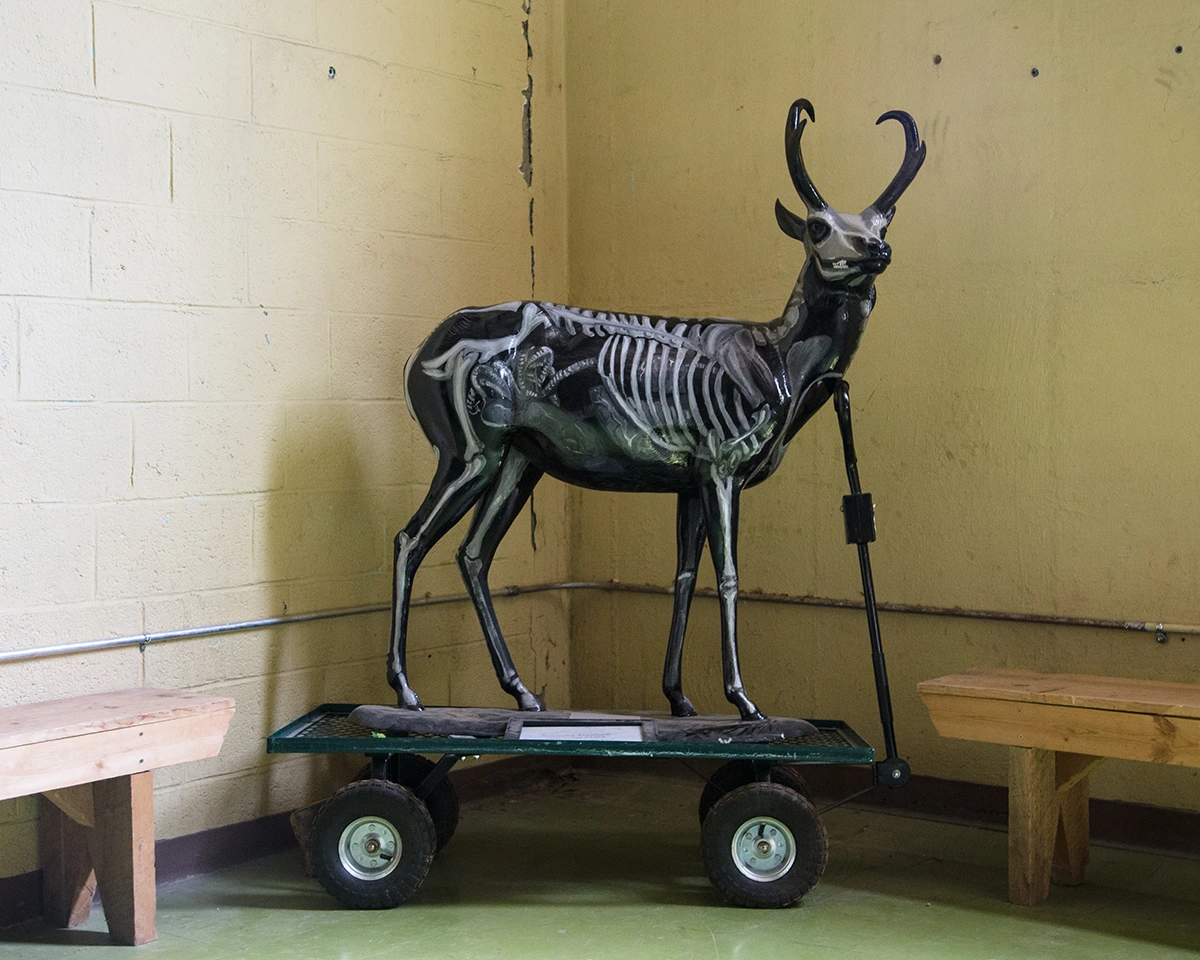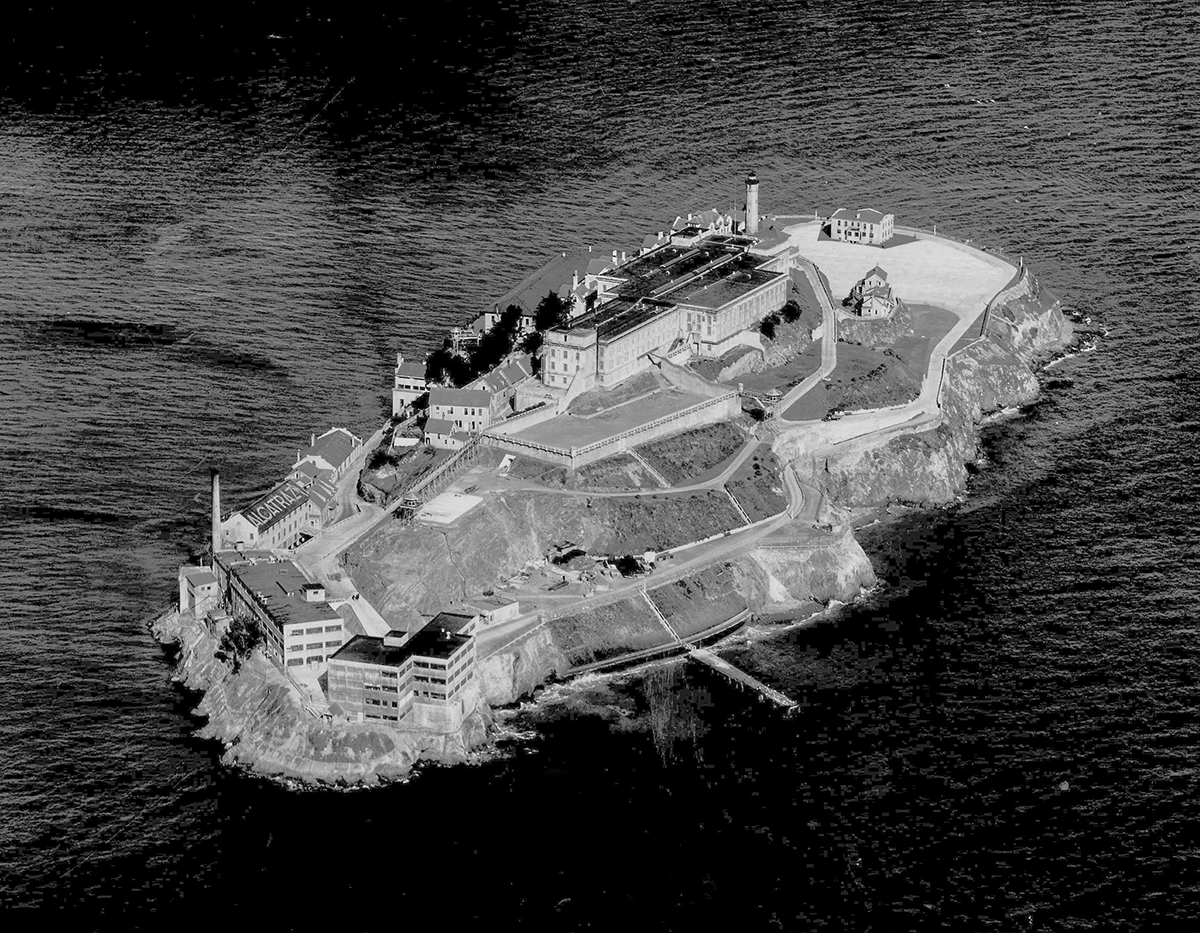Saturday, July 30, 2016
This is Part II of the mega road trip post: Ghost Towns, Bad Lands and Yellow Stones. See Part I for the trip summary and other awesome locations from this trip.
Wyoming State Penitentiary was constructed in 1901. During its 80 years in service, 250 people died here, of which only 14 people were officially executed by hanging or, later, the gas chamber which was installed in 1936. Others died of natural causes, suicide or inmate violence. One particular method of suicide involved running head first into the well-secured cafeteria tables. According to one notable inmate *****, whose documentary style journal was later found in the prison archives, and verified as true accounts, men were often sent to the "butcher shop" which was an operating room in the medical ward, never to return. Some also froze to death in the "dungeon". The prison didn't have electricity or running water when it was built and it wasn't until 1978 that they had hot water, and that only lasted three years before it closed in 1981.
This was the last real stop on the trip and at this point I had used up all my film. I was mostly concerned with the film lasting through Bannack, which succeeded, so I shot these on digital.
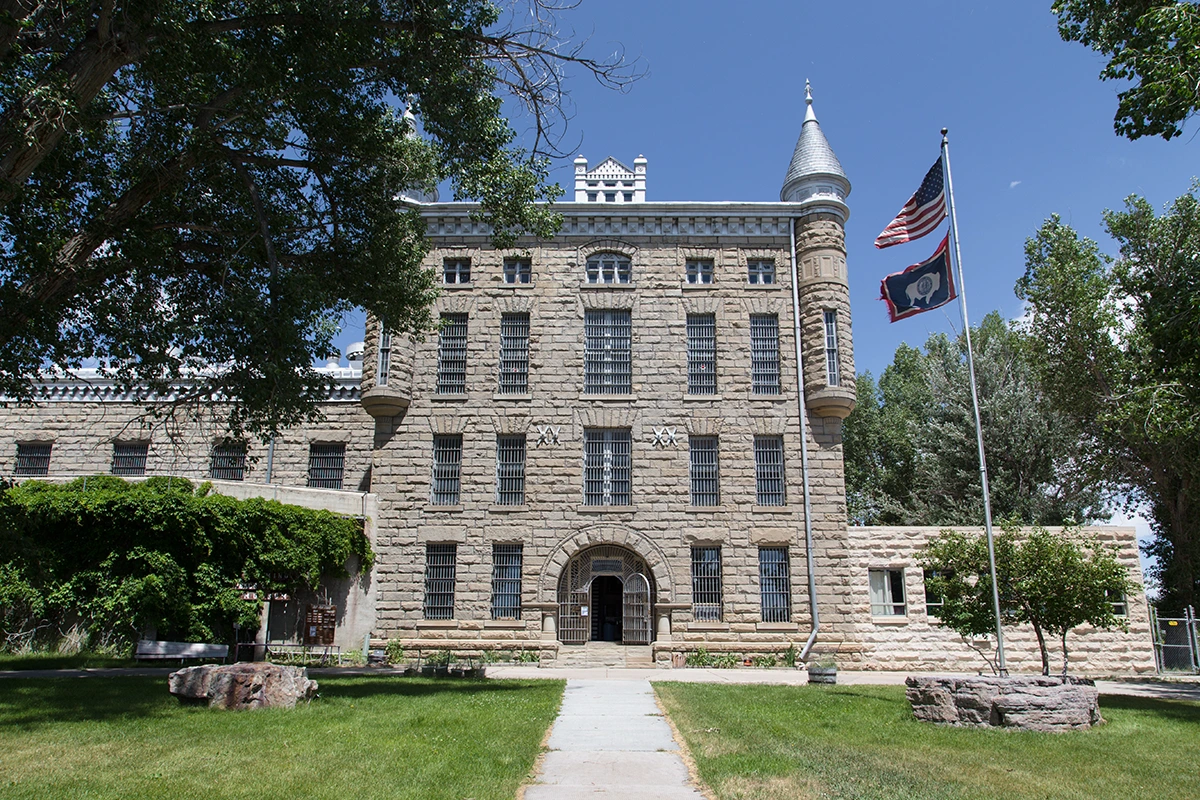
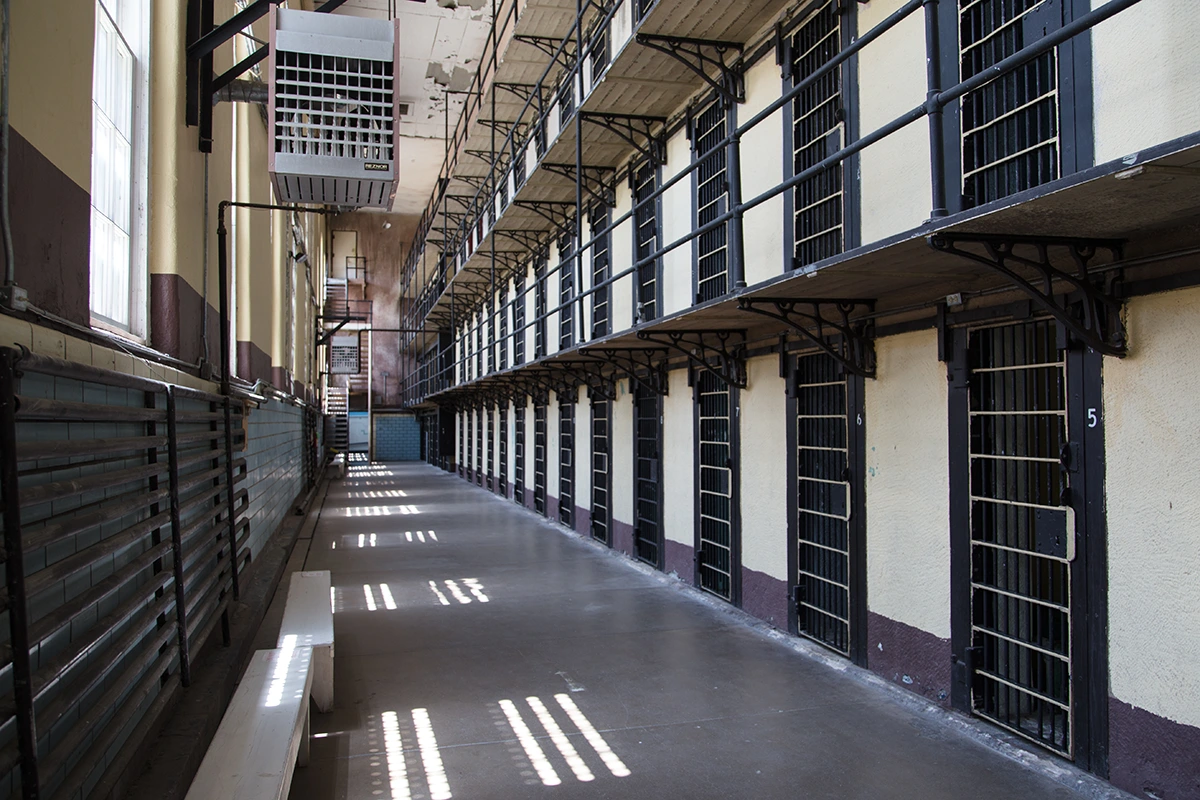
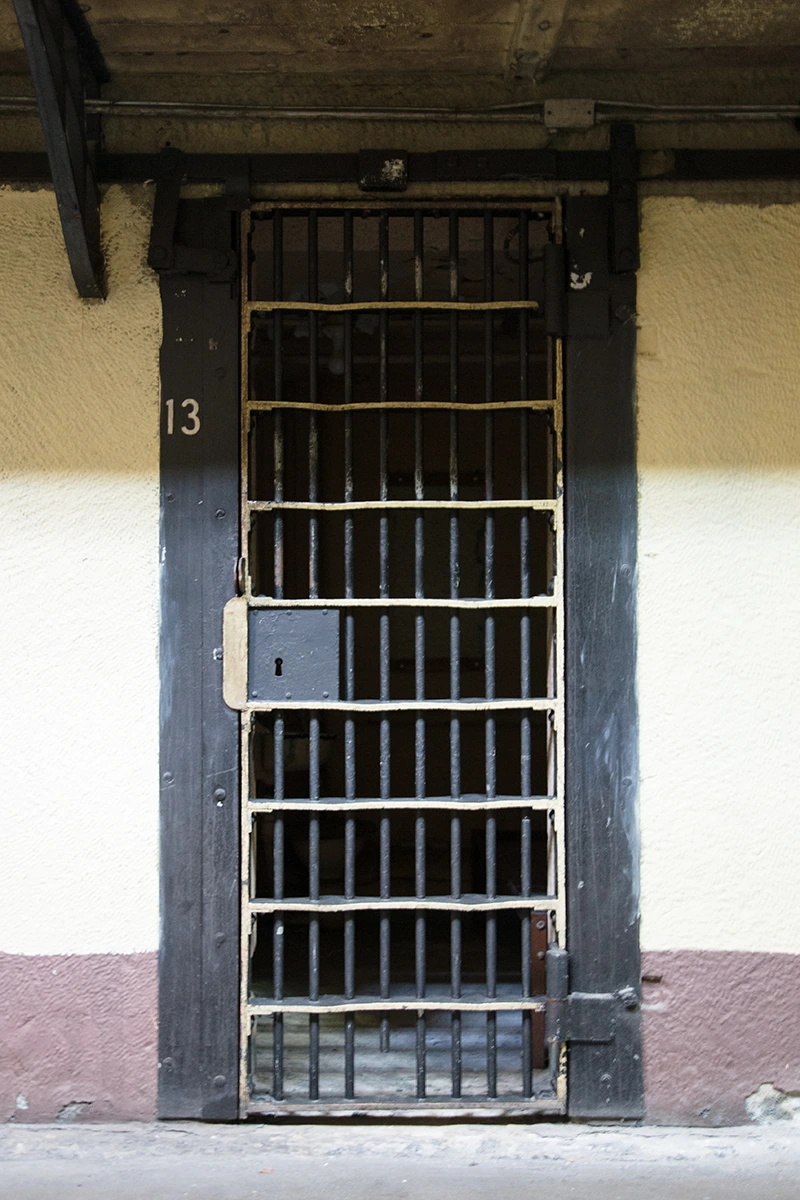
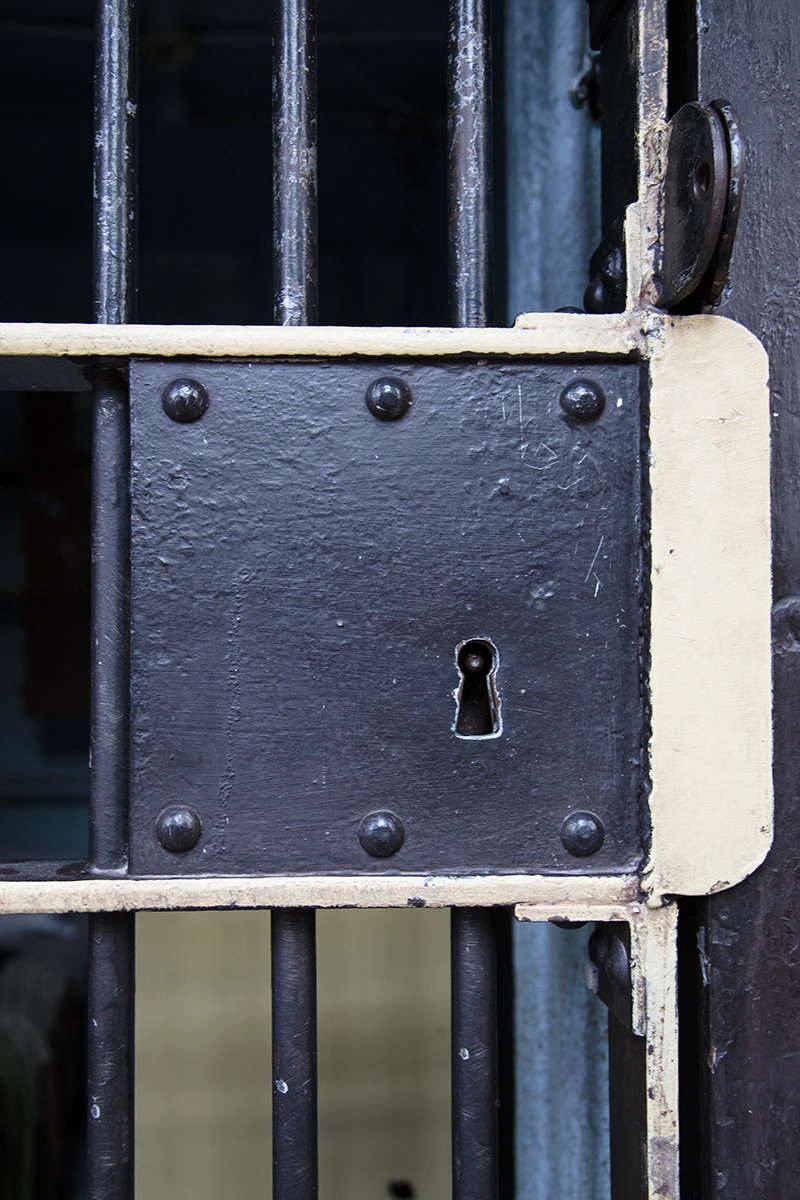
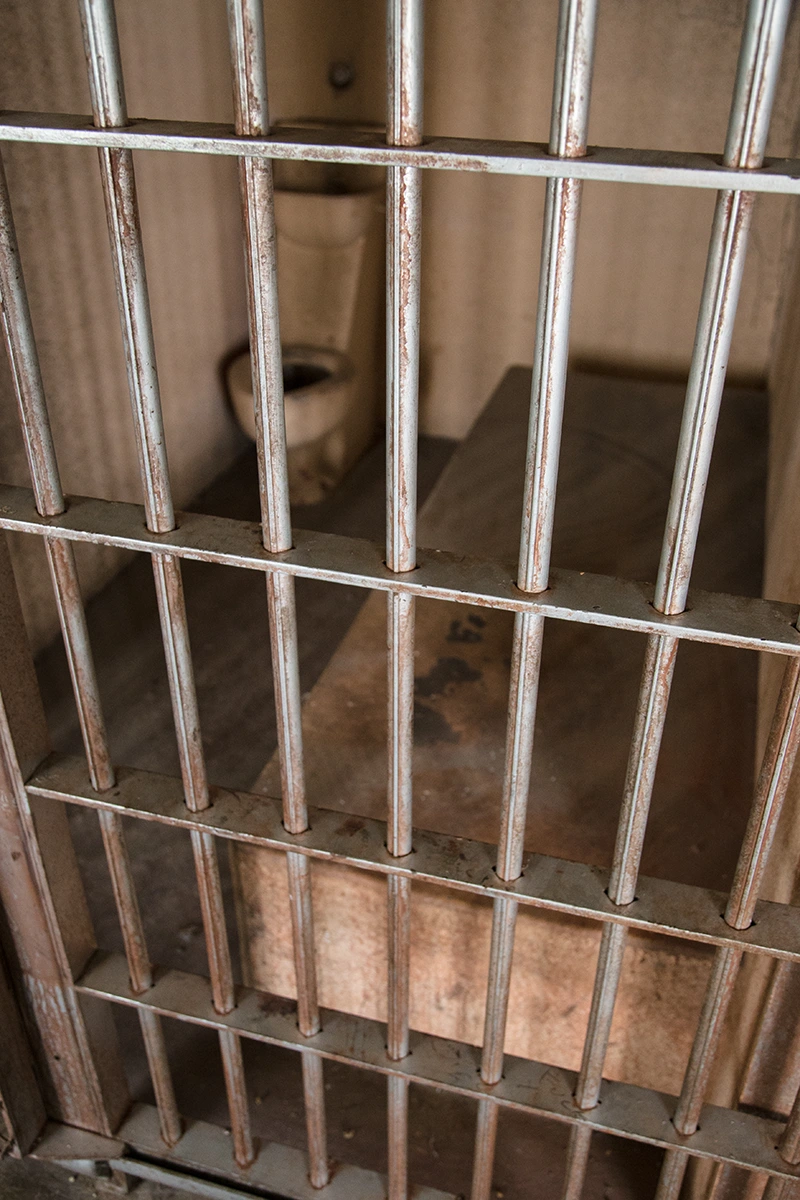
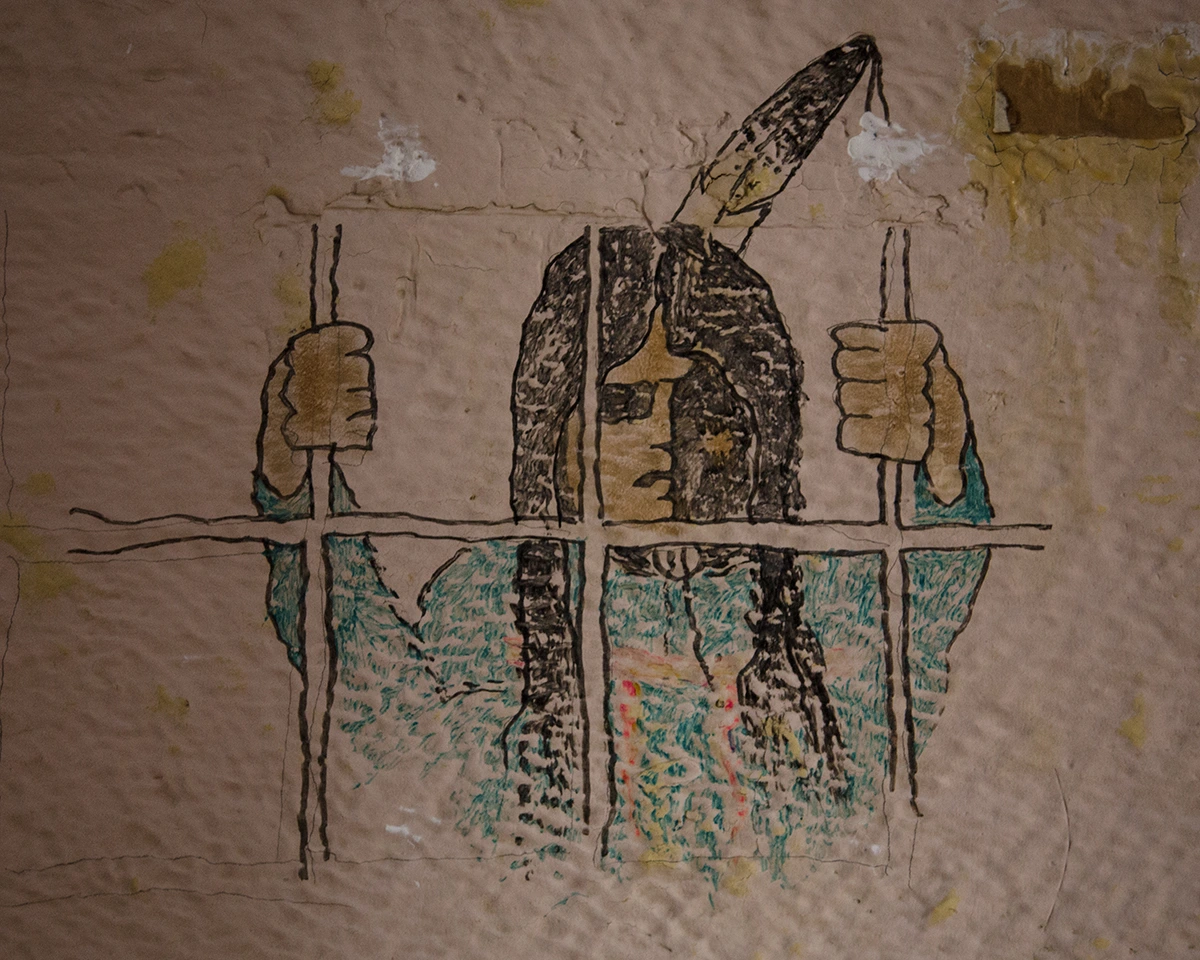
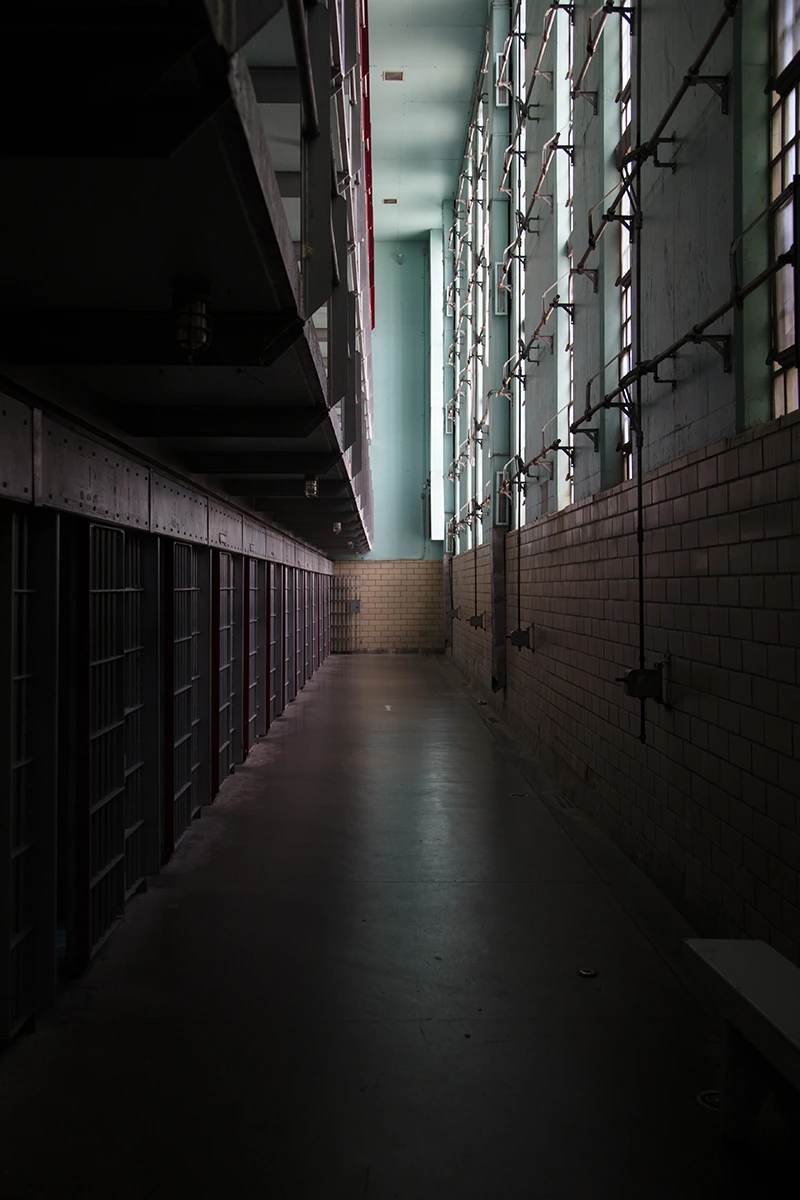
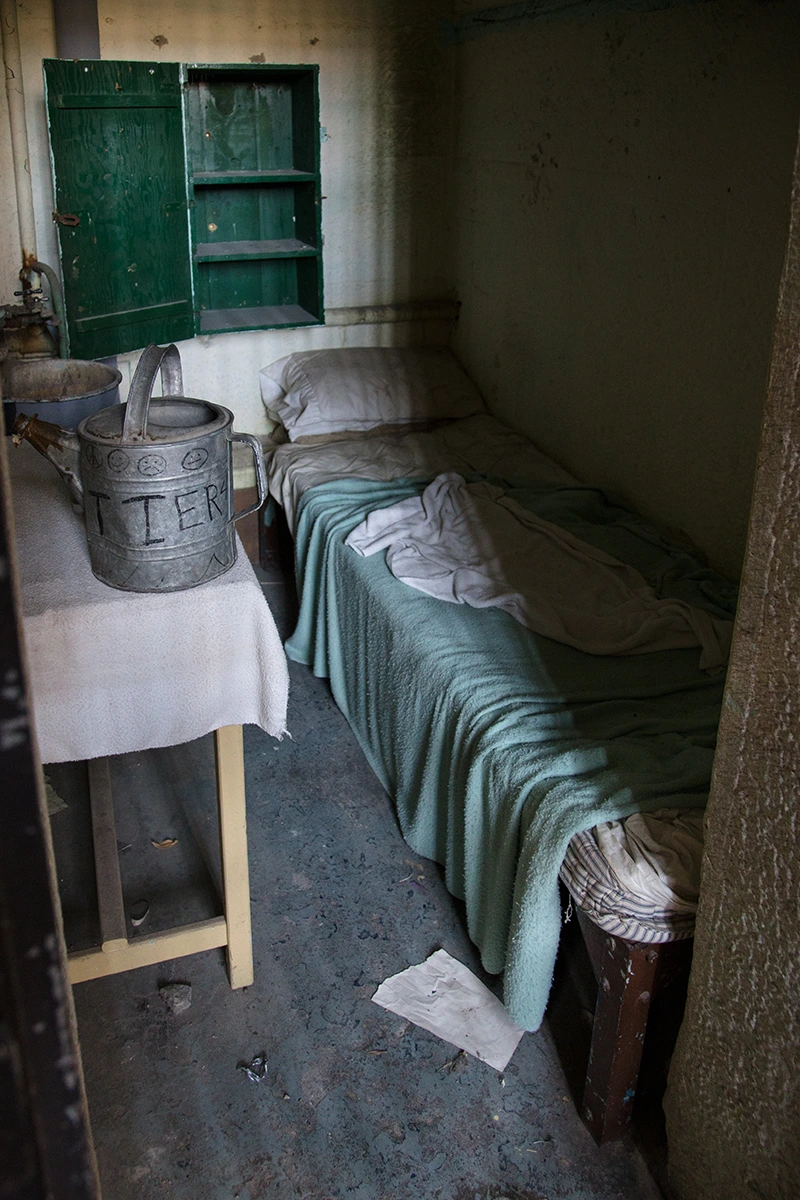
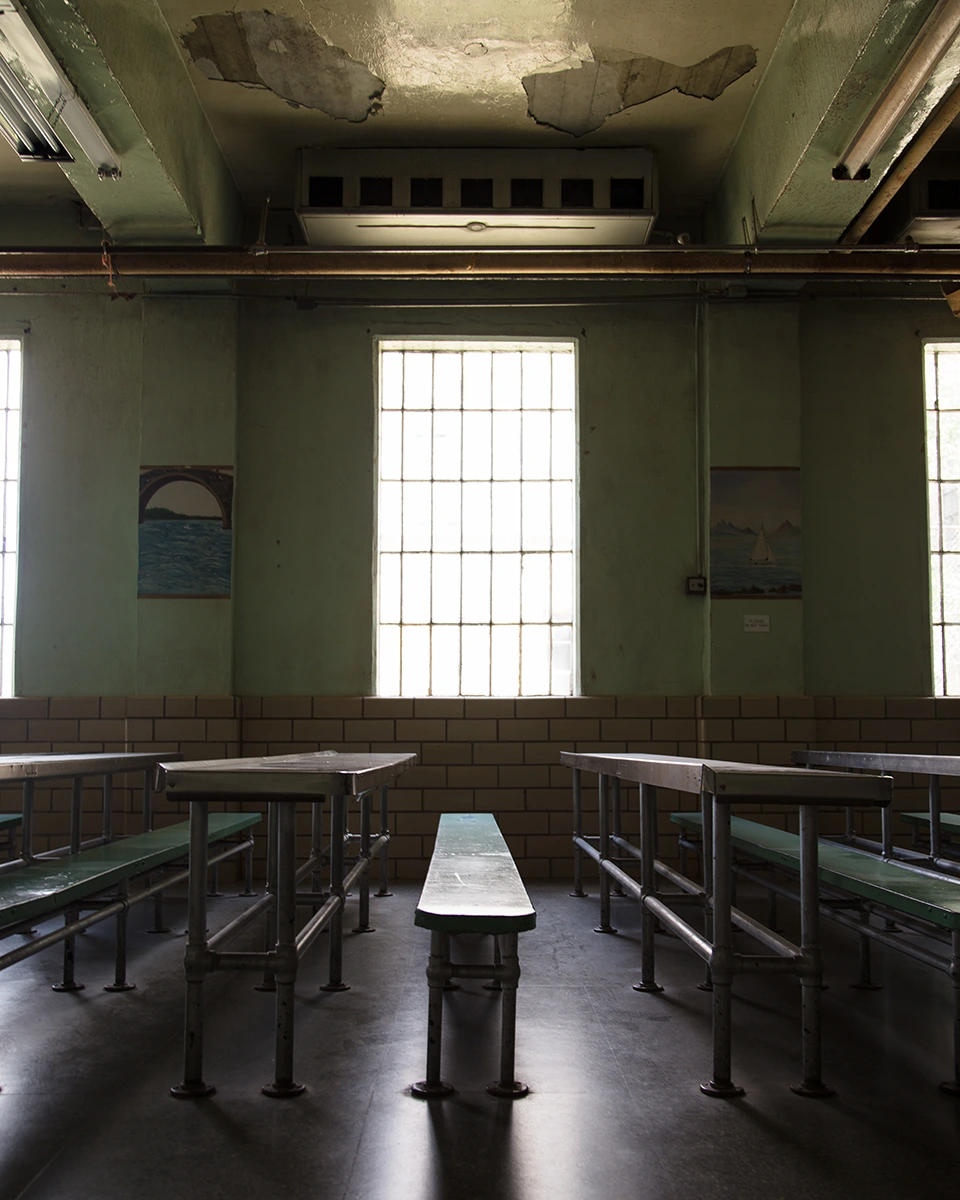
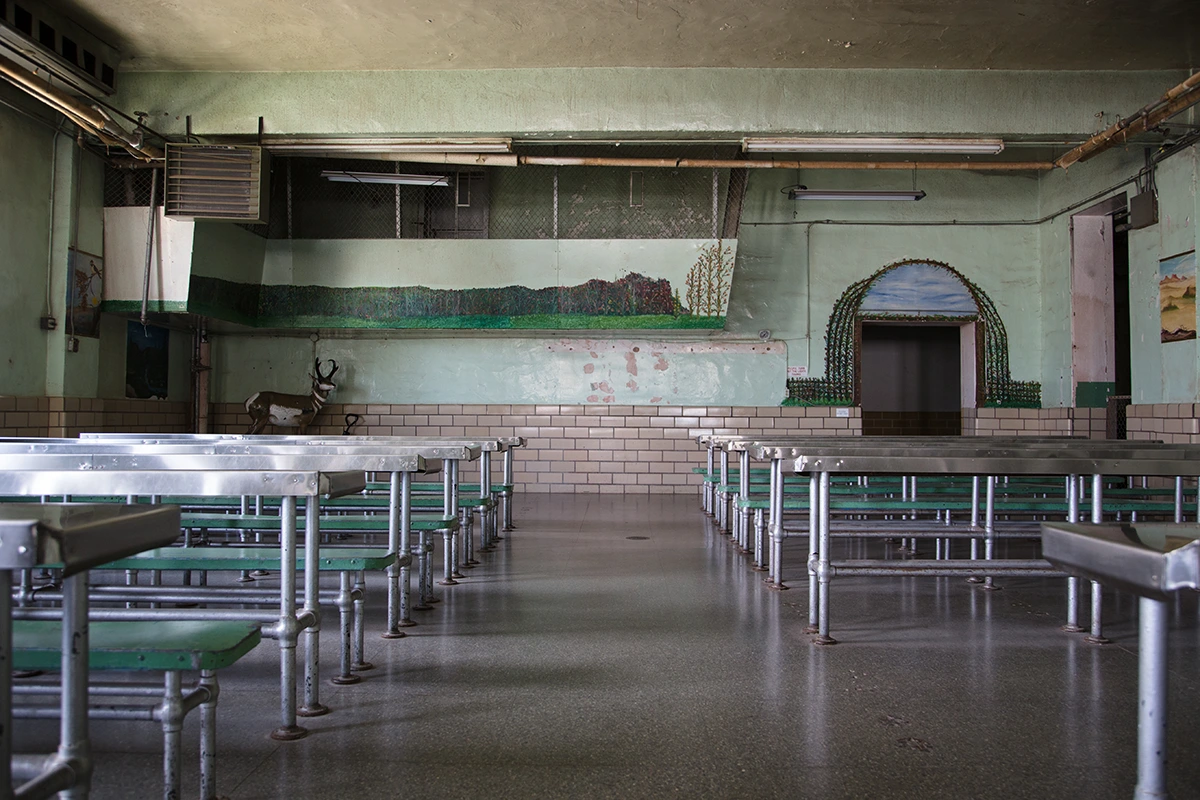
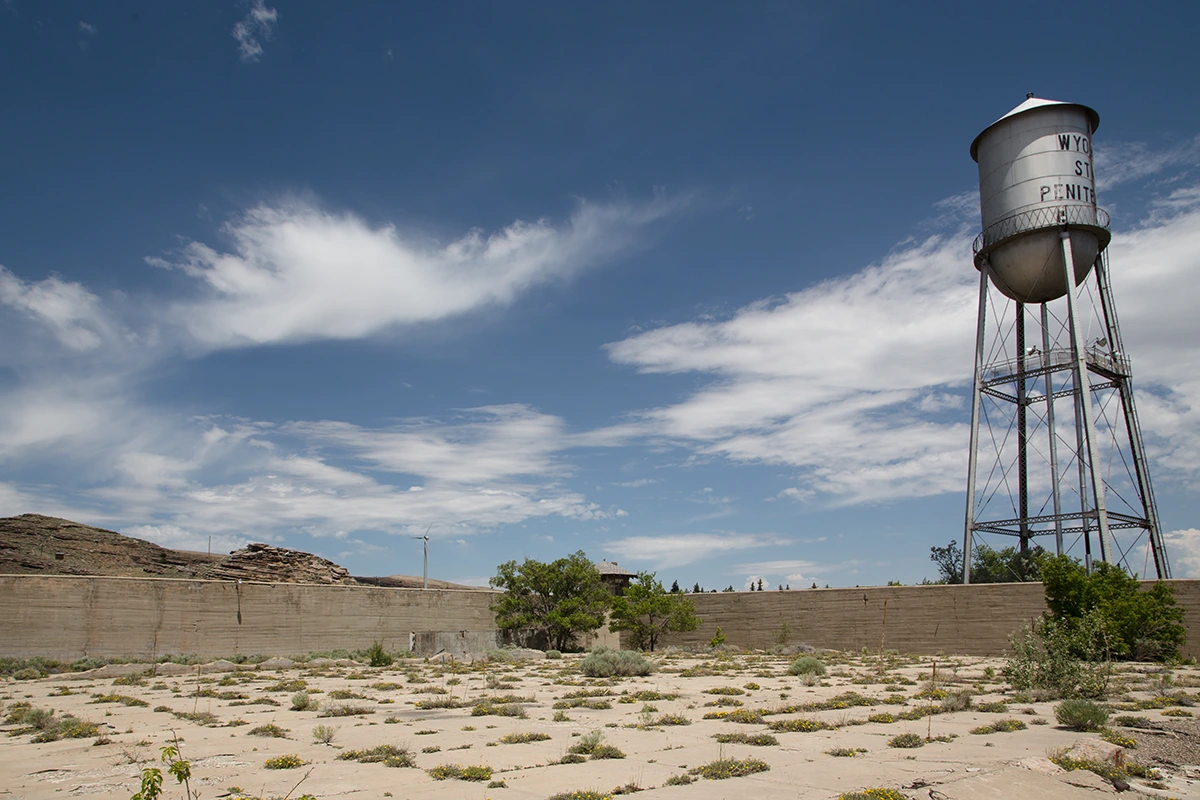
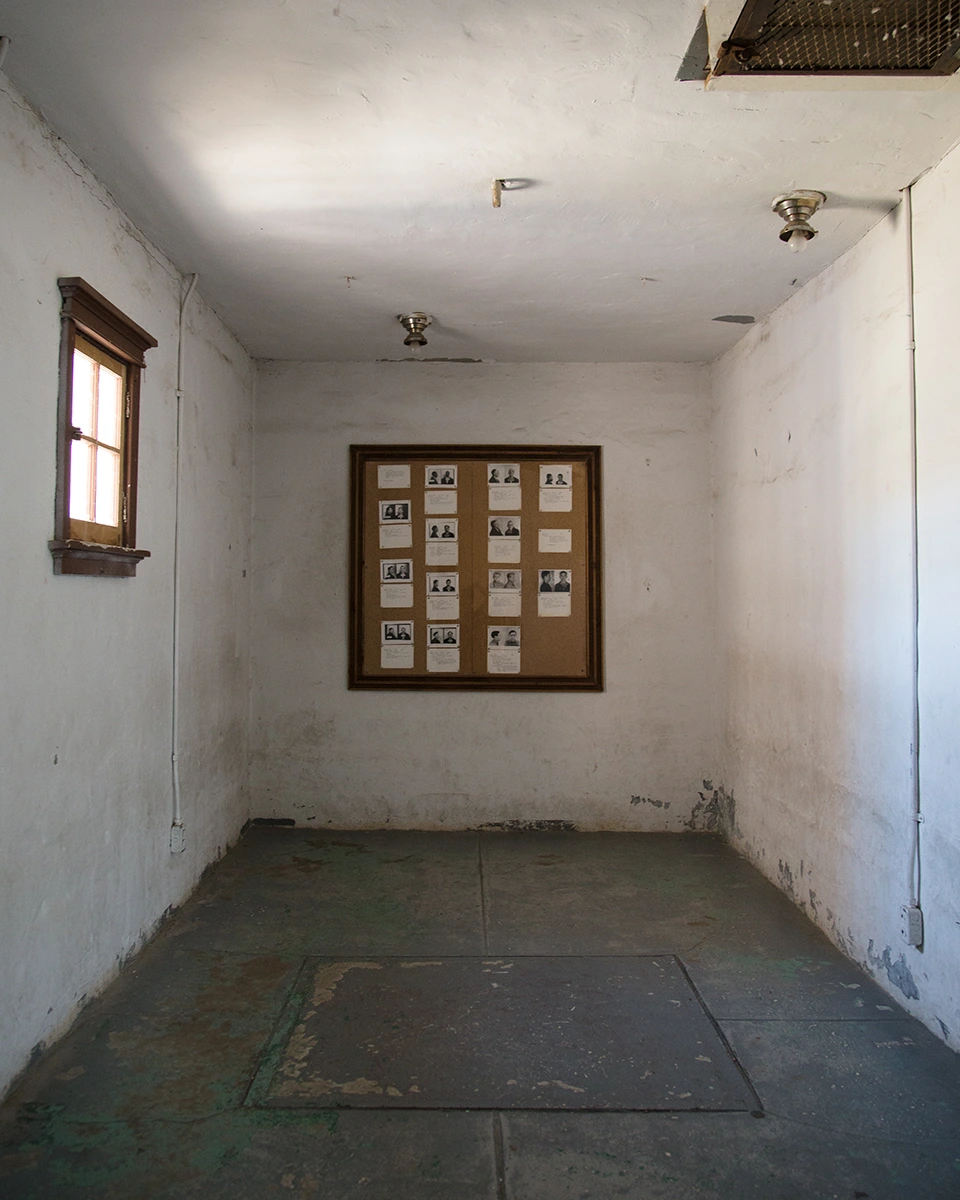
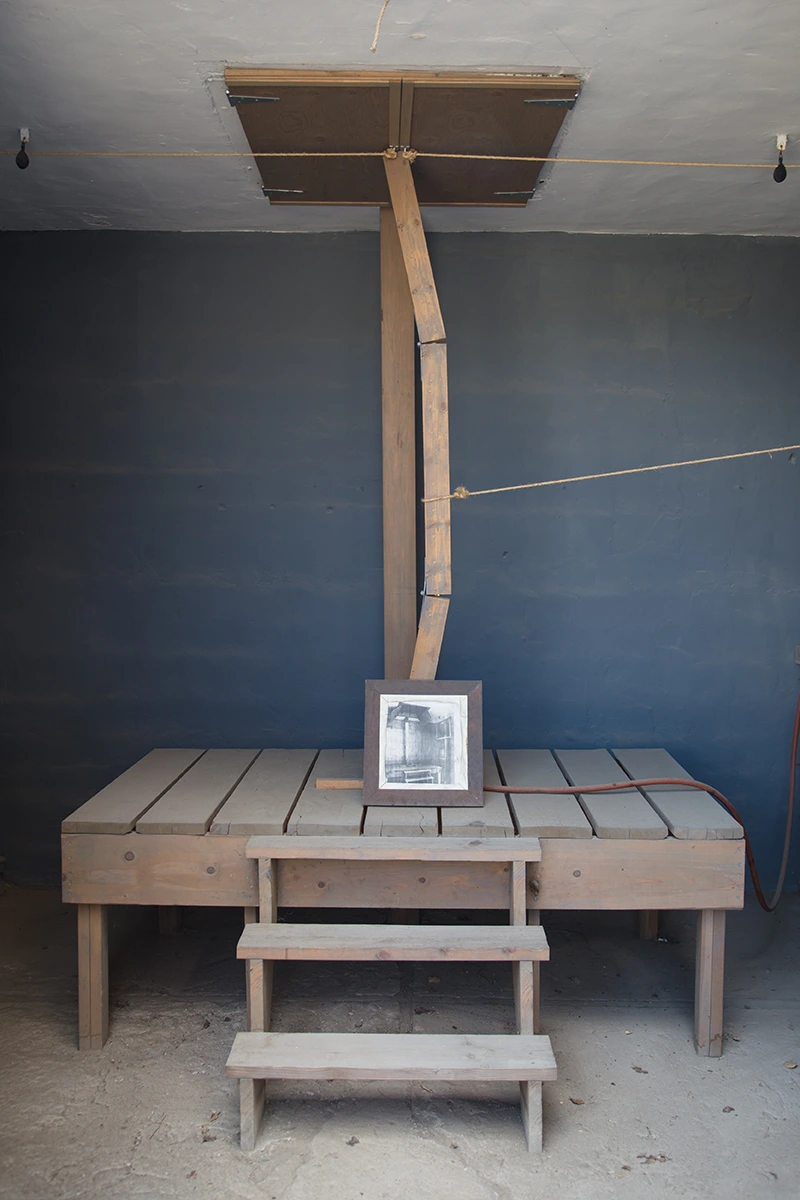
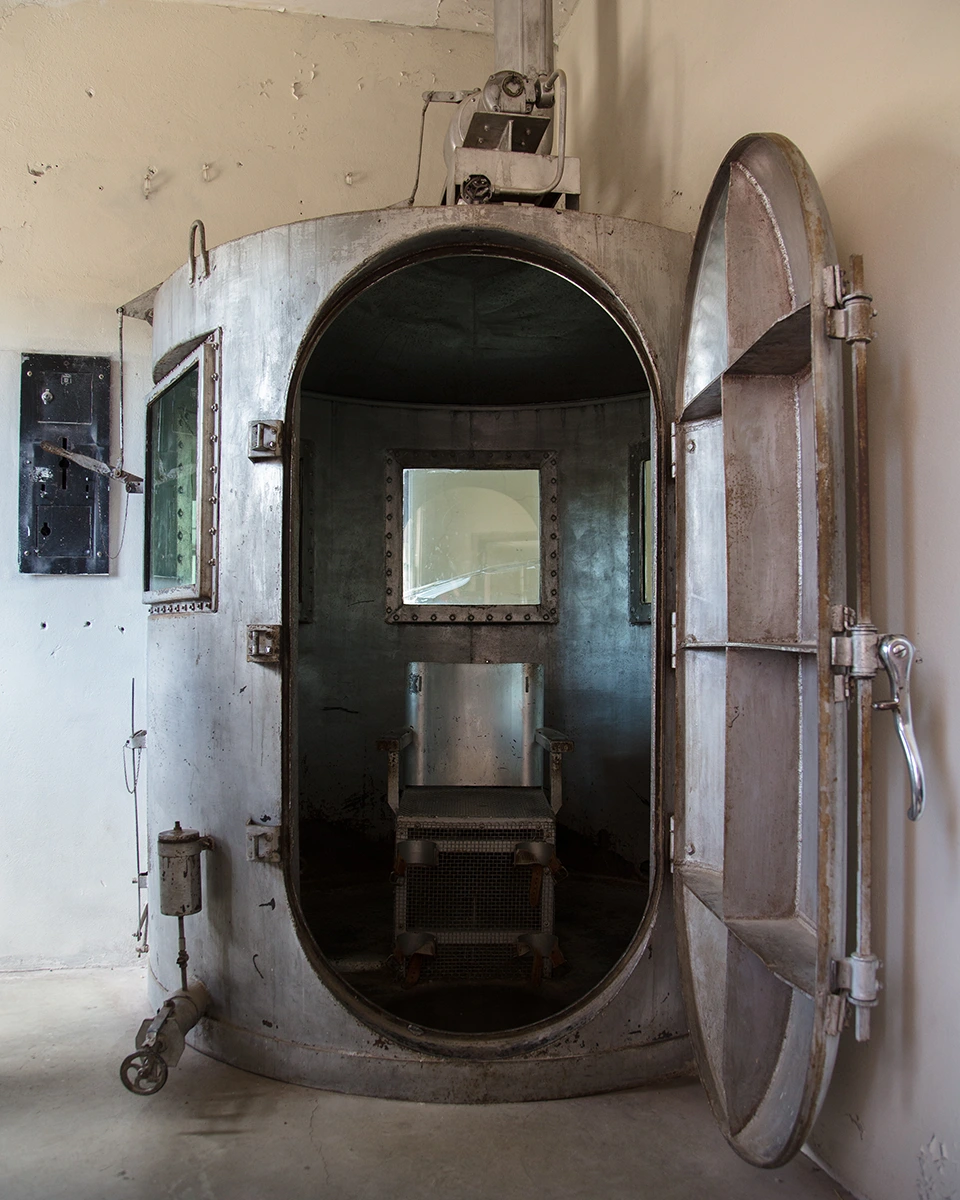
Labels: 1900's, historic, institutional, jalil, state penitentiary, western, wyoming
Friday, July 29, 2016
Shot on 35mm Film
This post is the result of an extensive road-trip from Saint Louis to Yellowstone and everything we could fit in between. In total: we traveled 3,589 miles at the expense of 71.5 hours in a car. We slept in a tent most nights, made dinners on a propane stove and cooked breakfast by fire in the morning. The temperature in Wyoming and Montana often dropped into the 30's at night but by noon the following day would climb 40+ degrees. Of all the shenanigans I've engaged in and all the road-trips I've taken across the country, this was the longest yet. It also featured some of the harshest environmental conditions and minimal-est accommodations to date. This is also the longest blog post. Ever. The trip was to last 11 days and (most of it) was a "legal" flavor of adventure, also known as "tourism", which is an activity I had occasionally thought about trying someday. For the photography I relied almost solely on an old 35mm camera and 9 rolls of film by which to capture the experience. I had just purchased this old, used camera (Canon A-1) to replace an even older one (Canon EF) that had stopped working at Armour. I hadn't even tested it yet, so these were my first rolls through it. I used a digital camera only once late at night at the Badlands and then again on the last day of the trip (at Wyoming State Penitentiary), so all I'd have to show for the majority of this trip was whatever film happened to turn out(!). We planned this trip months in advance, actively planned for the weeks leading up to it and slowly accumulated supplies including all of the food and water we'd need. Finally, the day had arrived and after work one day we set off into the night.
We headed west from Saint Louis and watched as the rolling green hills and dense summertime humidity of Missouri slowly flattened out and diluted into the wide open spaces of the great plains. As the miles passed through much of the same scenery, we crossed through Chamberlain South Dakota where the Missouri River cuts the state in half just south of the Crow Creek Reservation. Here the terrain becomes increasingly arid and the hills propagate like waves in all directions. Further west, deep fissures scar the otherwise monotonous landscape. We turned off the highway and headed down the road past a giant prairie dog statue, which I have concluded with near certainty, and a complete lack of scholarly research into the matter, must be a shrine to the benevolent Prairie Dogmother, a magnificent beast who watches over all who traverse the path over which She gazes through the tiny slits which are Her beady and omniscient eyes. At 12 feet tall, She towers above any human in both Her physical and Her esoteric properties. Unfortunately, I was too awestruck to get any photos of Her myself. If I was seeking spiritual enlightenment on this trip, I found it here. Beyond the ominous Prairie God statue, strange new sights signaled our arrival into strange new lands.
The jagged formations of the Badlands rise out of the earth like some ancient geological vertebrae, hinting as to the old age of the mass from which they protrude. It is impossible to stand below them and not wonder at the great incalculable quantity of time which has passed under their watch. Some clues remain, such evidence as archaeological finds in the area include discoveries of native camps tens of thousands of years old. Among other earlier Native Americans, the Lakota lived and hunted in these sacred hills. I'm not sure exactly how the formations occurred, but the Lakota people tell it like this *: "There was a time when the land that is now the Badlands was a high plain covered in the greenest and richest of grasses and the animal people lived there in great numbers. The Great Spirit that had created this land decreed that all quarrels must be forgotten when any tribes were camped upon this plain. For many years, many bands came together here and though they might be unfriendly at other times, here they danced and sang and traded in peace. But then, from the western mountains came the people without meat or skins and with the look of a hungry wolf in their eyes. They wanted this place for their own and were not willing to share, so they at once set about driving off all the other tribes until there were no others on the plain. A council was called to ask for help from the Great Spirit. But if He heard, He gave no sign. The people from the mountains grew fiercer and were not content to stay on the plain anymore. Now they went about the country seizing all villages that stood in their path. The sky became cloudy from smoke signals sent as the tribes began to call upon others long distances away to help carry out an attack upon these mountain people. Warriors began to make ready for the great battle and fighting men began to gather from every corner of the land. At last all were assembled and the day had come for the advance. now the Great Spirit took matters into His own hands. Dark clouds hid the sun from the face of the world. Lightning streaked across the blackness and thunder rumbled high over the hills. From the ground, fires flamed forth and the earth shuttered and rocked. A wide gulf opened and into it sank the mountain tribe-all their people and all they possessed. With them sank all life-the waving grass and clear springs and all the animals. As suddenly as it came the storm ceased. The earth became fixed in waves as it had rolled and shaken. There was only a barren waste on which nothing has ever grown or can grow. The Great Spirit had taken away the lands that had caused wars among His children and left to those He spared the evidence of His power and His punishment." Geologic evidence may support such a theory, too, as a lush ecosystem was found to exist here long ago. The Lakota called this area "Mako Sica" which means Bad Lands. By the time we arrived the sun was already low in the sky, so we saw what we could with the remaining light before we set up camp among the shadows of Mako Sica.
Mako Sica -aka- The Badlands of South Dakota
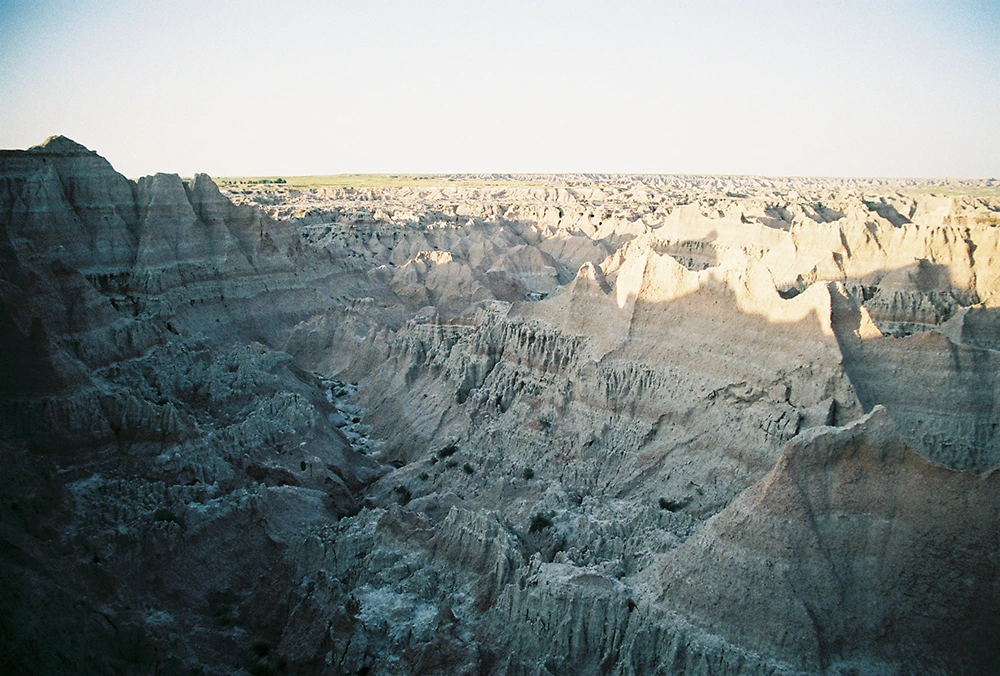
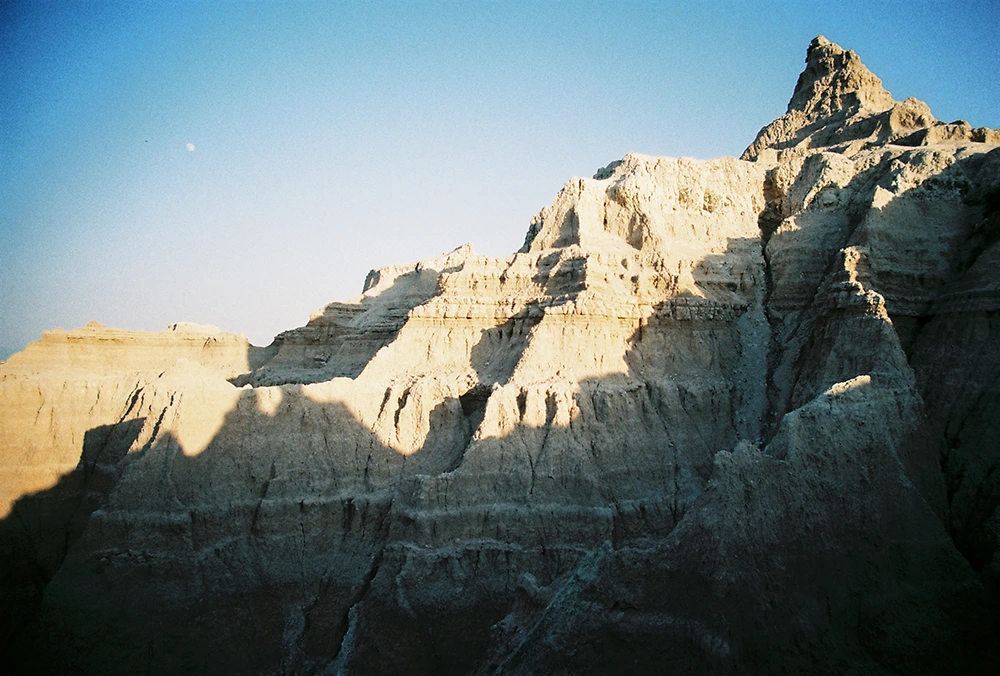
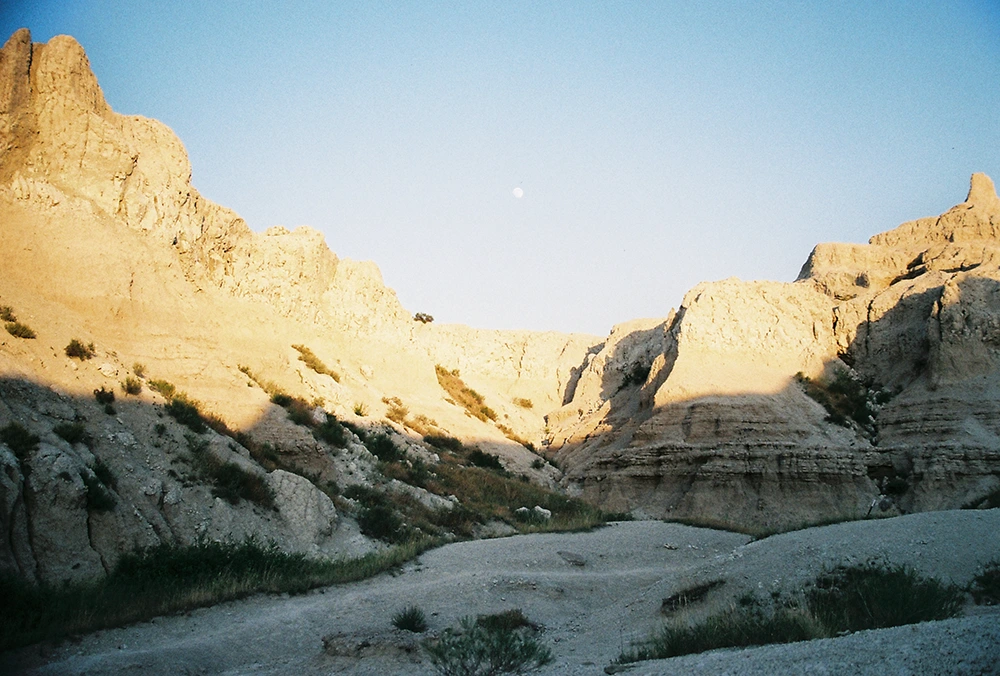
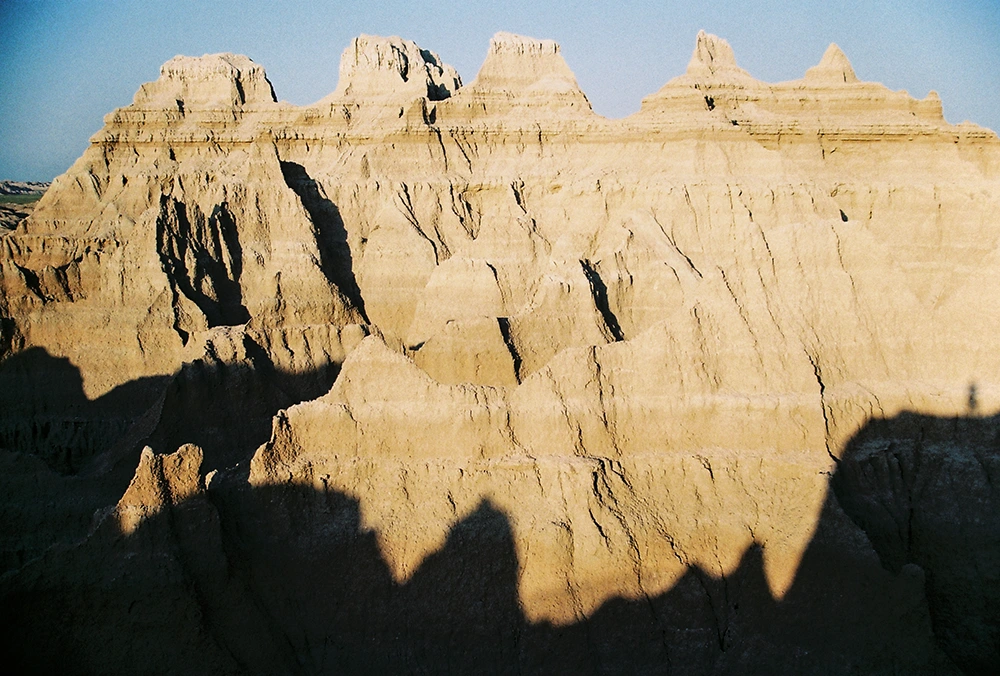
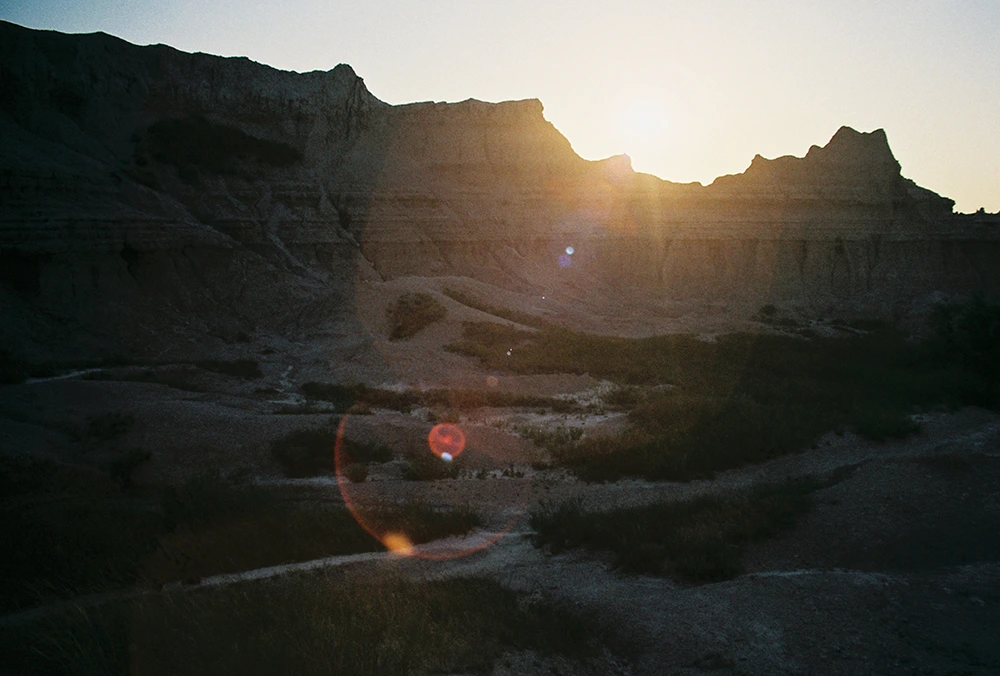
I went back alone, late at night, to observe the Bad Lands by moonlight. It was dark and cool under an increasingly cloudy sky. The winds were picking up and blowing from the west and it was clear that a storm was on its way. Naturally, after I left camp I realized I brought the rain cover from the tent went with me on the floorboard of the vehicle... The signs which warned of rattlesnakes were placed near the walking paths and I was careful where I stepped when I left the path especially now that it was after midnight and I was alone. I was communicating, or so I thought, my status to my wife who remained back at the campground. I decided to experiment with different settings on my digital camera in an attempt to dial in the best settings to shoot the same scenery on film later. This was sort of cheating I guess but I only had nine rolls of film and didn't want to waste any. This was all rather tedious and I much preferred no lens between myself and the surroundings, so I didn't make a lot of progress in this regard. I soon realized that my messages were not making it back to the campground. I had been gone over an hour by this time and although she was not receiving mine, I received hers. On top of that, the skies were threatening to soak the inhabitants of the tent very soon if I didn't return with the rain cover. So I only managed to get a few digital shots of the place by night before I had to get back.
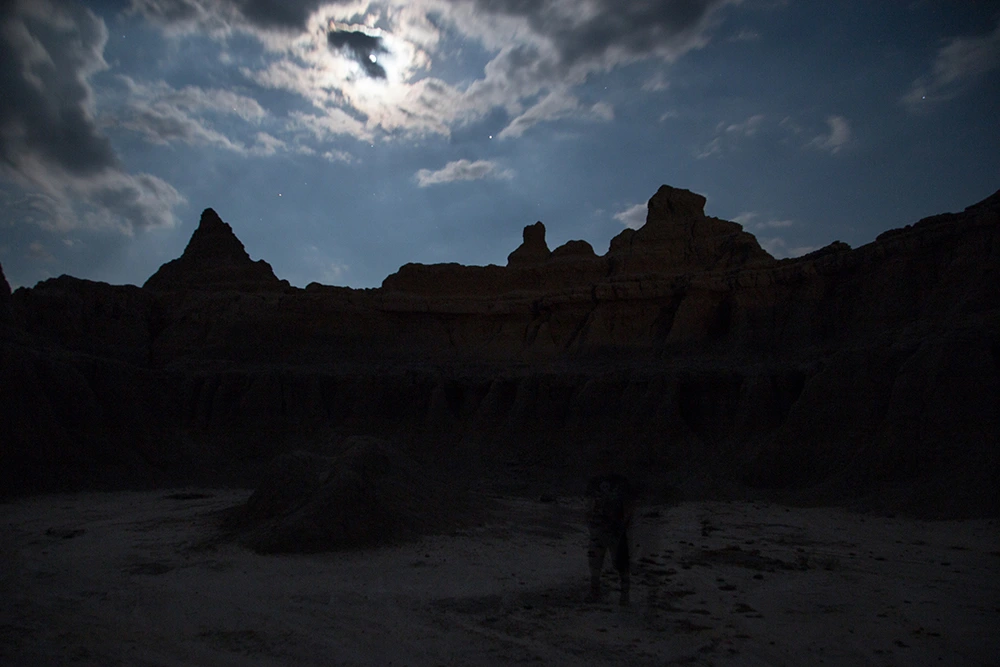
Yellowstone
Another day in the car saw us through increasingly desert-like surroundings. Towards the end of the day we finally saw mountains rising in the distance. We camped within view of the Bighorn. Past a town called Ten Sleep, we encountered some of the harshest environments of the trip. According to wikipedia ** : "Ten Sleep was an American Indian rest stop, so called because it was 10 days' travel, or “10 sleeps,” from Fort Laramie (southeast), Yellowstone National Park (west-northwest), and the Indian Agency on the Stillwater River in Montana (northwest). There are numerous archeological sites throughout the area, with frequent discoveries of artifacts such as arrowheads, pictographs and petroglyphs. Ten Sleep was also the site of the Spring Creek Raid, one of the last feuds of the West's Sheep and Cattlemen's War. It was there in March, 1909 that cattlemen attacked sheep herders and their flock, killing three men and shooting hundreds of the sheep. Caught and convicted, this was the end of major conflict, although it was many years before the two livestock growers' groups resolved their differences." Outside of town, we passed street names like "49 1/2" and speed limit signs which read "50 plus".
On the 4th day we finally reached our main objective. Inside Yellowstone, we visited some of the usual attractions in addition to hiking, camping and generally enjoying the scenery. Luckily, it is a big enough place that the herds of grazing tourists can be avoided easily enough. We drove over and through mountains covered in pine forests, we hiked to waterfalls deep in the woods which steamed with the combination of spring water and boiling geysers which spilled together down the rocks and culminated into rushing mountain streams. We swam in rivers warmed by thermal springs. We hiked up the side of a mountain, at which point we reached an elevation of 9,100 feet, from which we could see clearly for miles and it was mountains in all directions. One morning, we stopped to have breakfast at a particularly scenic turnout in the road and encountered a bear with two cubs just down the hill from us. I could go on but suffice it to say that Yellowstone is as interesting a place as it could possibly be. There is no way to adequately describe all the sights and many people have done this already anyway. So instead of going on about already well documented natural phenomena that Yellowstone is famous for, I instead wish to share lesser known tales relating to the region specifically pertaining to the Native American's perspective.
Prior to the release in 2002 of a book on this subject***, very little was known of the Native mythology of the Yellowstone area. Early white explorers declared that the natives feared the geysers and other unusual features found here, and this was the generally accepted explanation for decades and it may have been partially true, but a recently discovered passage in a rare book has shed light on the Native's trepidation at discussing the region with whites. The explanation told to the author in 1883 is as follows: "No white man should ever be told of this region lest he should form a league with the devils and by their aid come forth and destroy all Indians". This is unverified, and obviously not using native vernacular, but it is in accordance with the sacredness which natives attributed to this region. It is evident enough that the Native Americans wished to keep it a secret from the white invaders **** . This region was known among the Crow Indians as "Land of the burning ground" and referred to the geysers as "Bide-Mahpe" which means "sacred or powerful water". To the Blackfeet it was "many smoke". The Flatheads knew it as "Smoke from the ground". The Bannocks simply called it "Buffalo Country". Of all the stories previously known, most of which are white inventions, the story of the origin of the Snake and Yellowstone Rivers is thought to be legitimate as it was handed down among the Shoshone tribe and it is as follows: "Long ago there was no Snake River running through this part of the country. Then came Coyote, the trickster, from the south who was always sticking his nose into everything. He traveled north past the Tetons and went up onto a mountain. There he found an old lady with a basket of fish. Coyote did not know it, but the old lady was Mother Earth. Hungry, he asked her to boil some fish for him. She offered to make him food but warned him not to bother her basket. He did not listen, stepped on the edge of the basket and spilled its water and fish. The water spread all over. Coyote ran fast ahead of the water trying to stop it. He piled up rocks to hold the water back, but the water broke his dam and rushed on. This is where the Upper Falls is today. Coyote ran on ahead of the water and again built a dam of rocks, but it did not hold the water back either. That is where the Lower Falls is today. The water kept on rushing and formed the Yellowstone River. Coyote then ran to the opposite side of the fish basket and followed its waters downstream, building several dams of rocks but the water would not be stopped. Those broken dams are the site of the American Falls and Shoshone Falls today on the Snake River. The big fish basket that Coyote tripped over is now known as Yellowstone Lake." The Crow tribe contributes serveral stories. One story, pertaining to what is now known as Mud Volcano and Dragon's Mouth, involves a character named Old Woman's Grandchild, a Crow brave who is a central mythic hero figure in various Crow folklore. I can only find one written account of his particular Yellowstone story online and I have rephrased into a more easily readable text as follows: "Old Woman's Grandchild fought many fearsome beasts in the lands of Yellowstone and killed them. After he defeated them, he turned them into mountains, hills and geysers. One of the beasts was a giant buffalo bull who breathed out gusts of smoke from his nostrils when he charged and who would suck in air with enough force to swallow people up and eat them. When Old Woman's Grandchild killed him, he turned him into a geyser that now sucks only wind and blows out hot blast of air. For twelve miles windward of it all of the trees are dead. Even animals would die in the old days but it is not as strong as it used to be. Then when he killed a giant mountain lion, he said "I will turn you into this" and proceeded to turn the mountain lion into another geyser formation. This is why the other formation makes a growling sound and it now roars all the time. He put it right next to the Buffalo bull to prevent the bull from coming back to life and harassing the Crows." Another Crow story pertains to Yellowstone Lake and is likely an origin story pertaining to the geysers which border part of and subsequently overflow into one southwest corner of the lake: "A Thunderbird grabbed a Crow Indian by his hair and took him to “Overlook Mountain,” on the southeast side of Yellowstone Lake, and placed him in a nest there. The Thunderbird told the Crow that he wanted him to help him fight the giant water beast that lived in Yellowstone Lake and which ate the Thunderbird’s young. The Crow built a large fire and heated many rocks and boiled much water. When the beast came out of the lake and climbed up the mountainside, the Indian pitched hot rocks and hot water into its mouth. Steam came out of the monster’s mouth and it tumbled down the mountainside and into the lake who now causes the landscape to erupt in hot springs and steam vents."
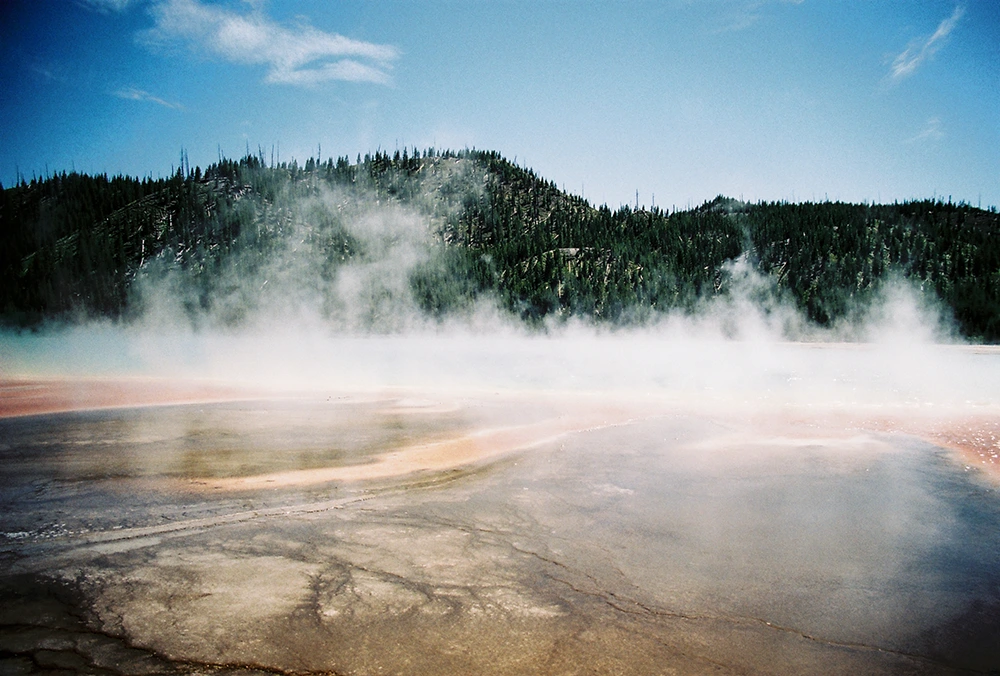
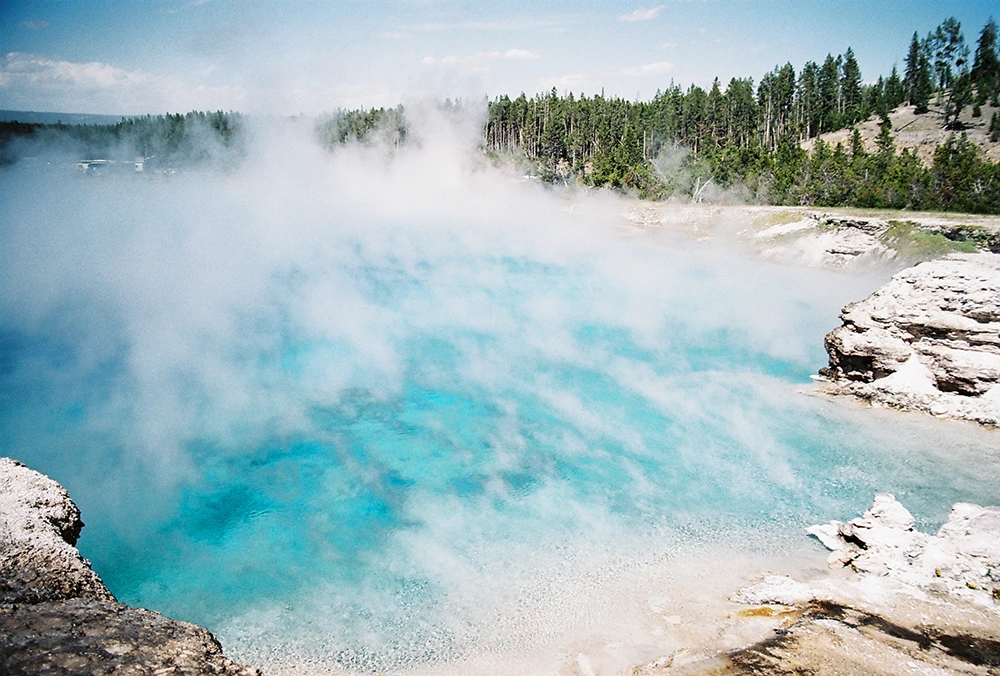
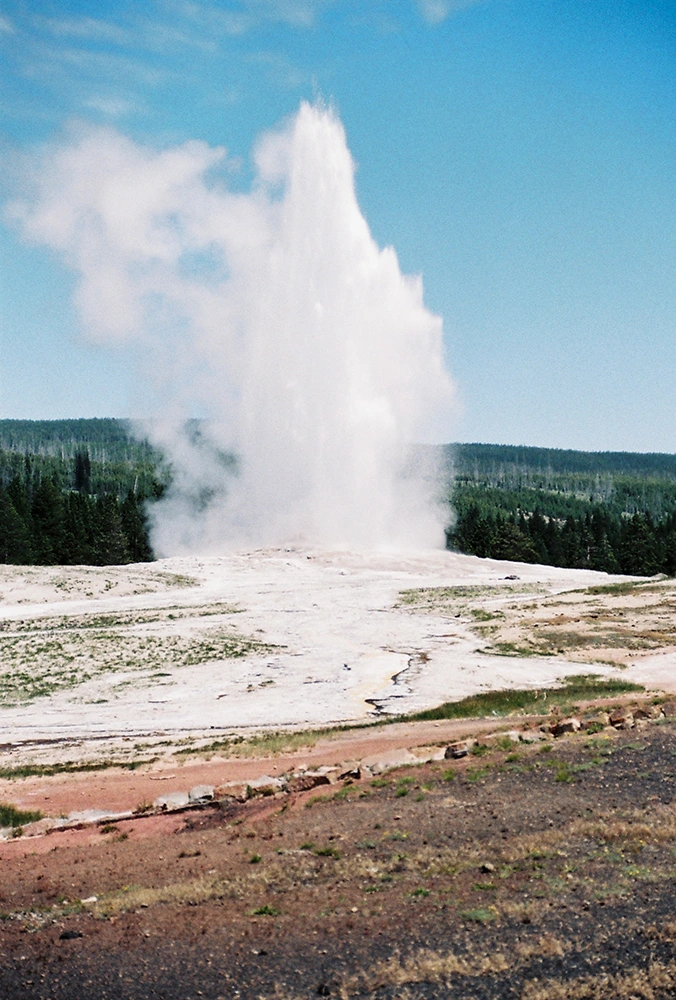
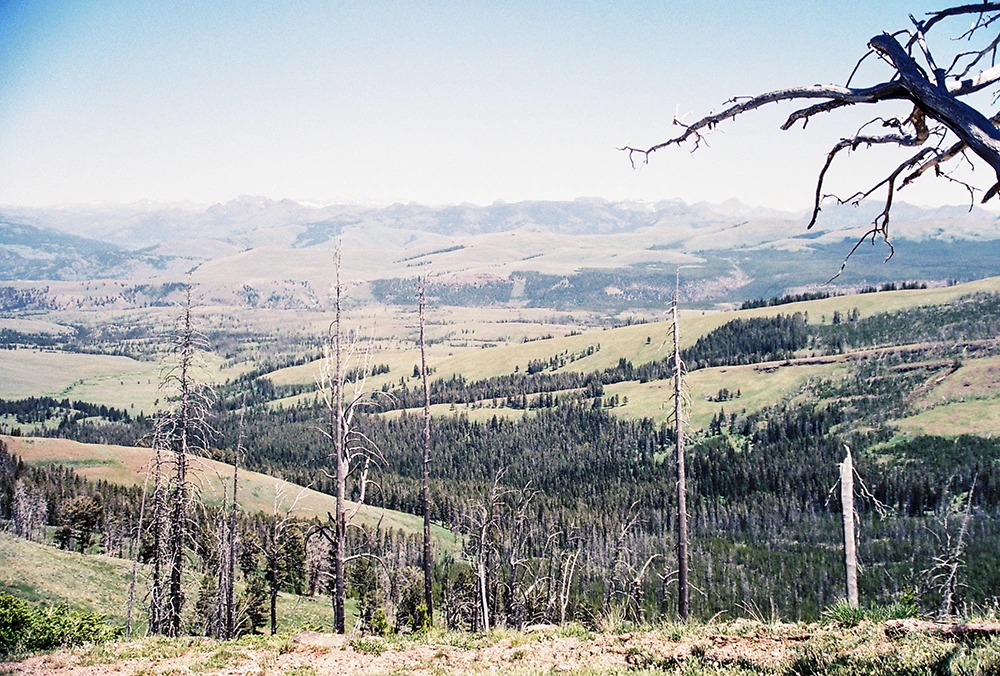
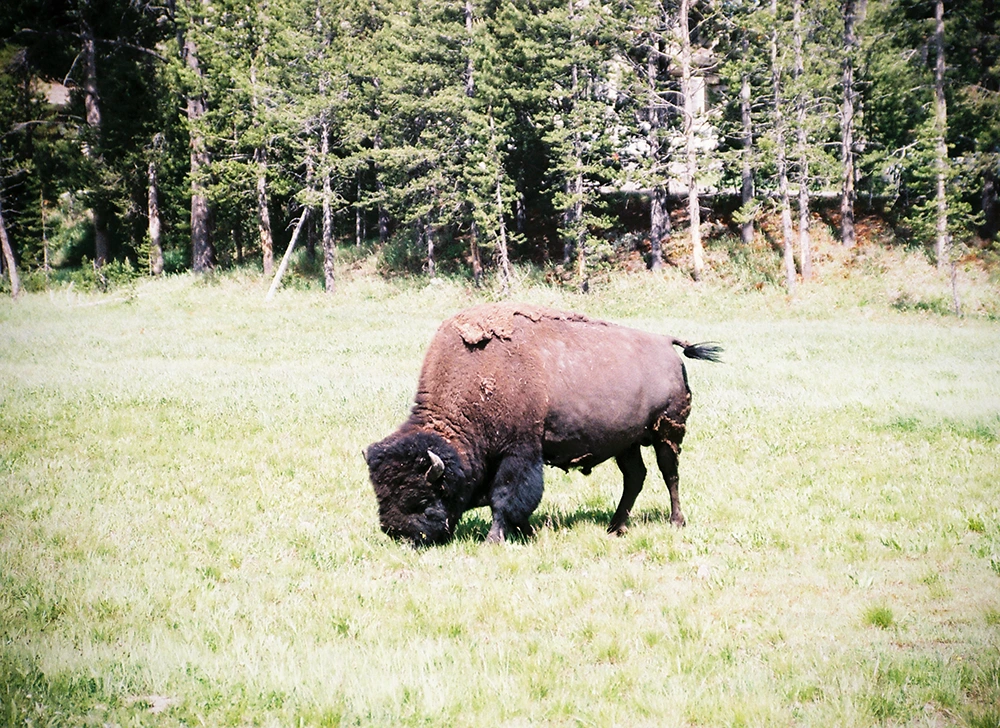
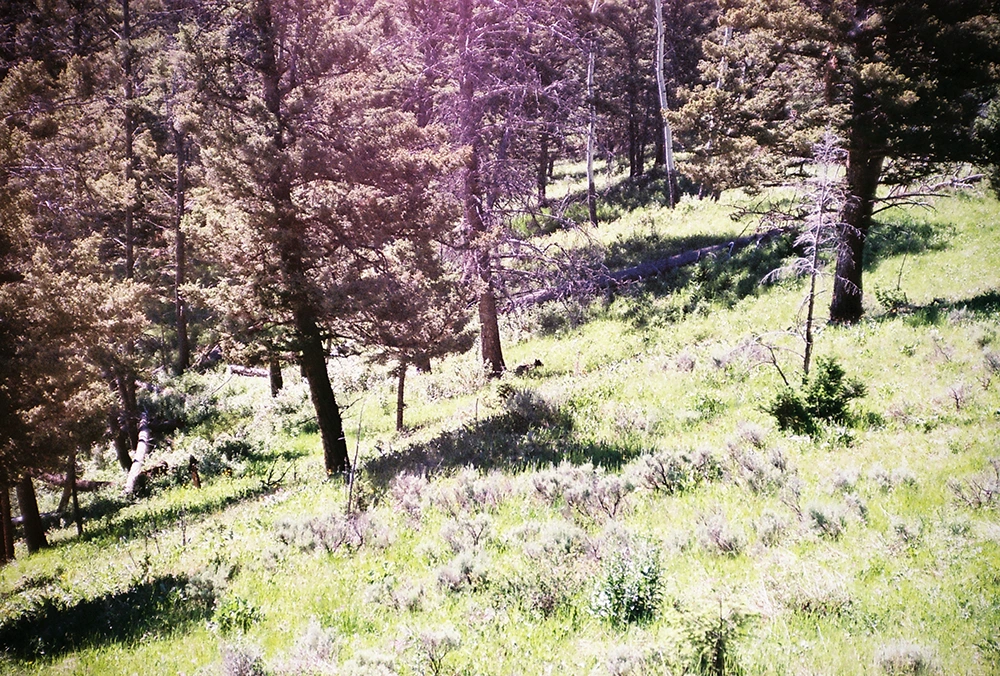
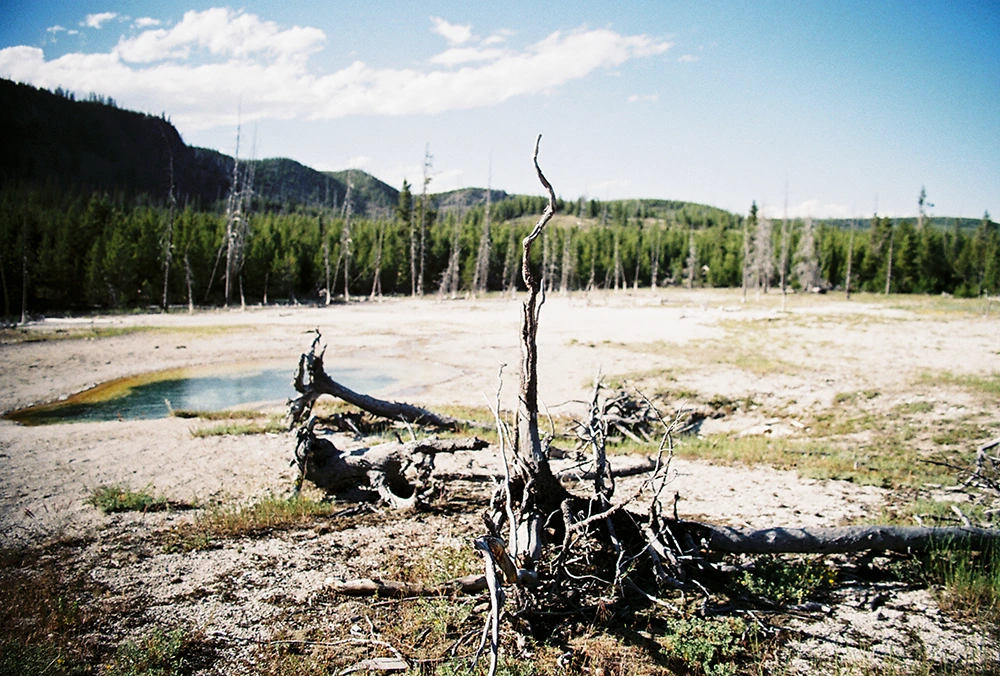
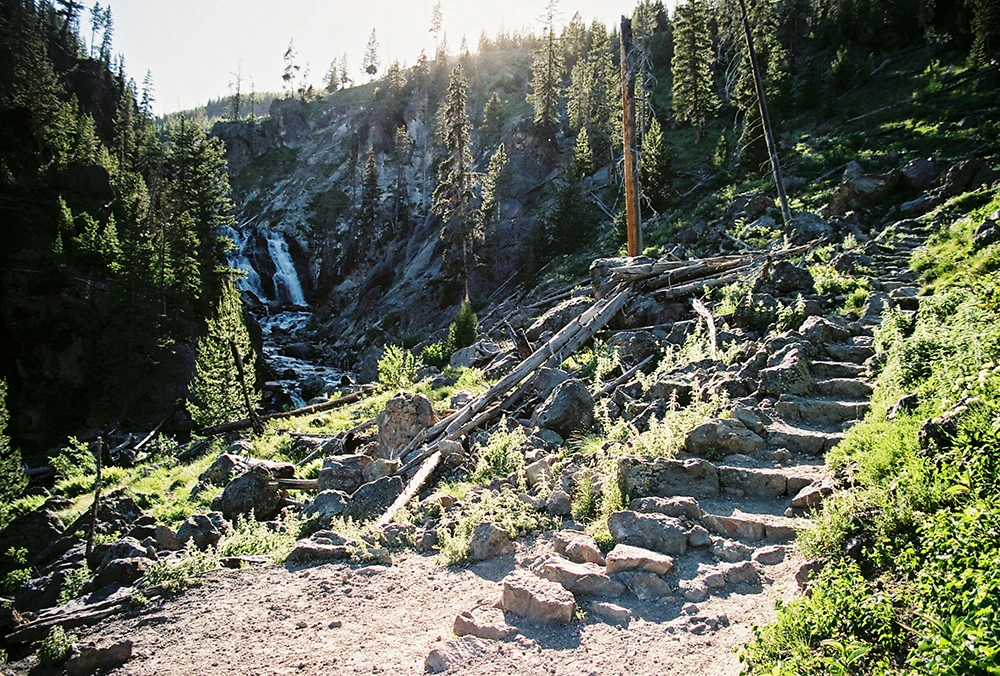
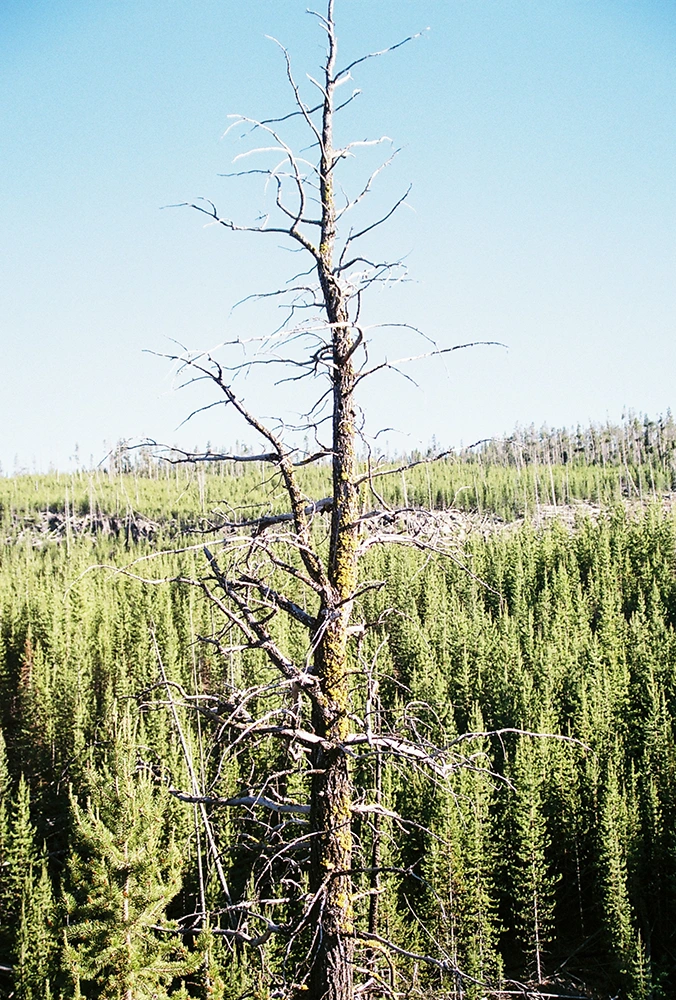
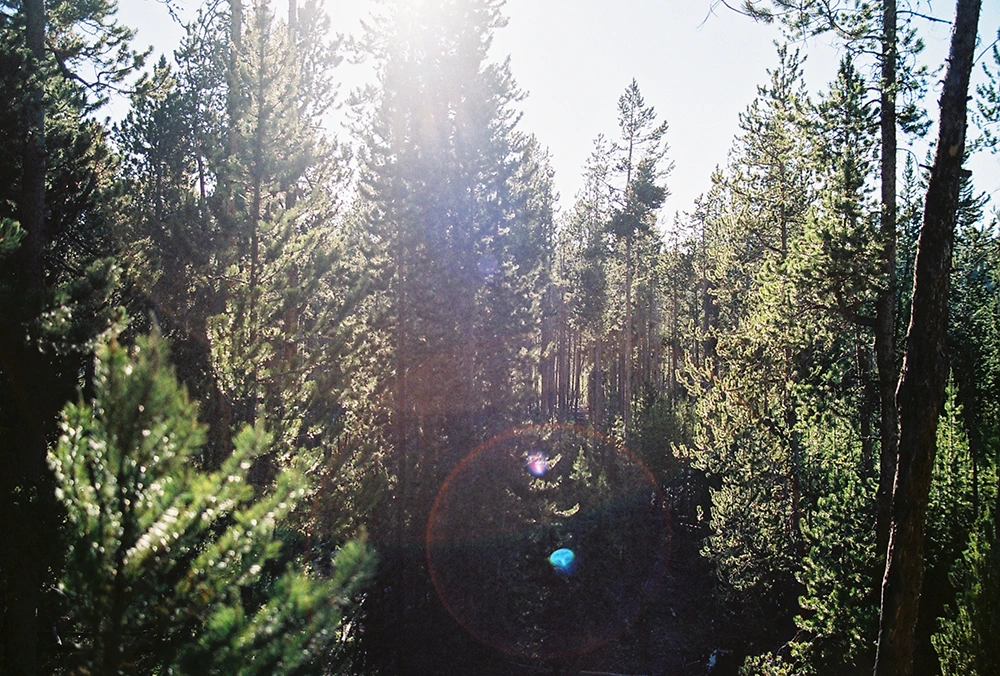
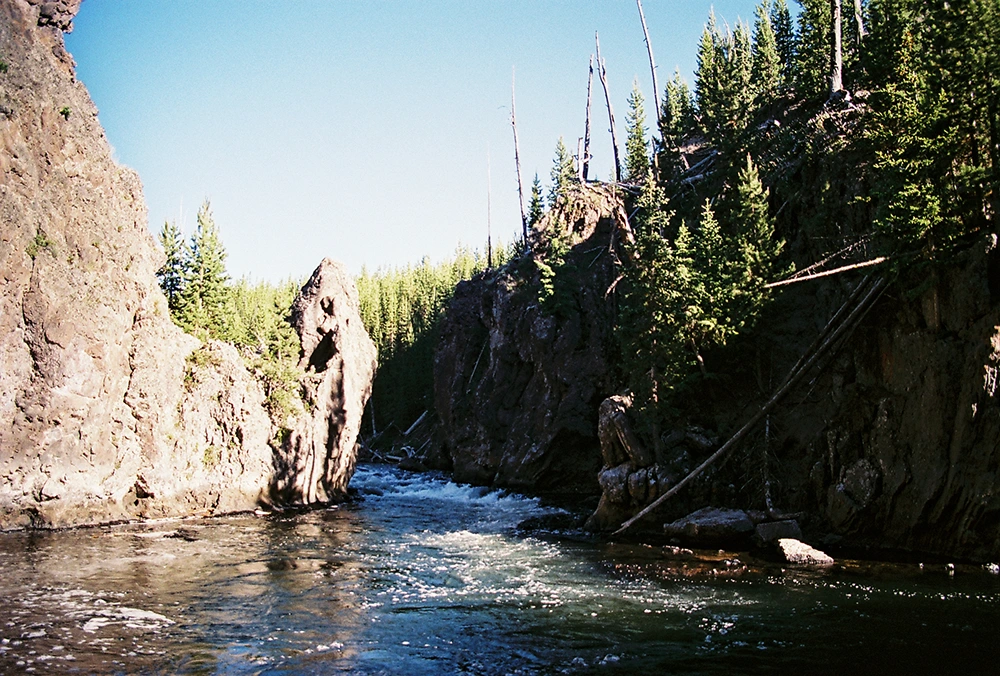
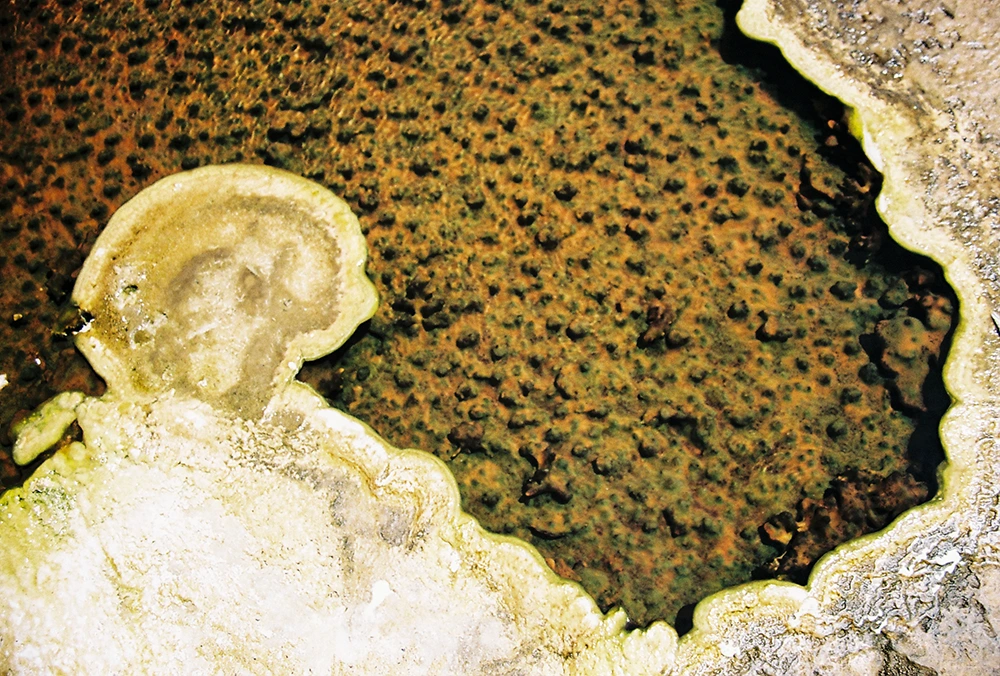
We spent only 3 full days inside Yellowstone before the time had come to move on.
There were plenty of opportunities to stop along the trip for various unusual sights, road-side attractions and a few ghost towns. Notable among those was the entire town of Bananck Montana. This was the last real destination, furthest point and most desolate stretch of the entire trip. They say that Montana is "big sky" country. I'd argue that it's not the sky that's big in this part of the country but everything else that is below it. Everything out here is so huge and so spread out that mediating on one's place in the world is almost a natural reaction when confronted by the immensity of it; we are so small in comparison. And in the southwest corner of the state, the dry summer heat pounds every living thing into submission and if the stunted vegetation scattered across the windswept hills isn't telling enough at a distance through air conditioned car windows, it quickly becomes obvious when hiking through the sweet smelling sage brush and the cactus which sprout up through the cracked and sun bleached ground. I also reflect on the tenacity of early dwellers of these remote lands who had no means of artificial refrigeration let alone bulk supplies of clean bottled water.
The Ghost Town of Bannack, Montana
Bannack was the site of a major gold discovery in 1862 and thus the town was formed. It was named after the local Bannock Indians and the difference in spelling is attributed to a clerical error which remained unchanged. Bannack was the capital of Montana Territory and the Meade Hotel, which is currently one of the best preserved buildings on site, served as the courthouse at the time. Notable among the other remaining buildings is the combination Masonic Lodge/Schoolhouse. Bannack Lodge no. 16 was chartered on October 3rd, 1871. The building was constructed in 1874 and was active as a Masonic Lodge until October 21, 1921 when the charter was transferred to nearby Dillon.
The town, on account of its extremely remote location, soon found itself increasingly occupied by outlaws and thereby gained a bit of a reputation. It didn't help that in 1863, a man named Henry Plummer was elected Sheriff *****. Plummer was suspected of being the leader of a gang of outlaws known as the "Innocents" who notoriously raided shipments along the main road connecting Bannack to Virginia City and elsewhere. Shortly after being elected sheriff, the rate of robberies and murders grew significantly and Plummer's seeming inability to capture the perpetrators caused the citizens to suspect his complicity in the matter. Soon a Vigilance Committee, comprised of local townspeople, was formed and they began hunting down the bandits. When captured, prior to being executed the suspects had identified Plummer and two of his deputies, Buck Stinson and Ned Ray as the leaders. Soon thereafter, on Sunday morning, January 10, 1864, the Vigilance Committee arrested the three and they were immediately hanged and their bodies left to freeze solid as they hung in the bitter cold of that January morning. Supposedly the hanging occurred on the same gallows which Plummer had recently erected. After their execution, the plague of robberies and murders had ended. One of the members of the Vigilance Committee, Nathaniel Pitt Langford, went on to become the first superintendent of Yellowstone National Park.
Being a mining town, the success of the town relied on the success of the gold extracted. It wasn't long before the more easily extracted ore was already gone and with that went many prospective miners. By the 1930's, the population had decreased to the point that even the post office had closed. One of the last nails in the coffin came with the advent of World War II, at which time all mining activities were banned. The schoolhouse eventually ran out of pupils and closed in the 1950's. it took the coordinated efforts of concerned citizens to recognize the vulnerable state of the dying town. In 1947, the first preservation efforts began. In January 1954, the town was effectively donated to the state of Montana with the stipulation that it wouldn't be exploited and made into a tourist town. Bannack was subsequently frozen in time and as such the palpable sense of remote isolation, one of its defining characteristics since its inception in 1862, remains fully intact.

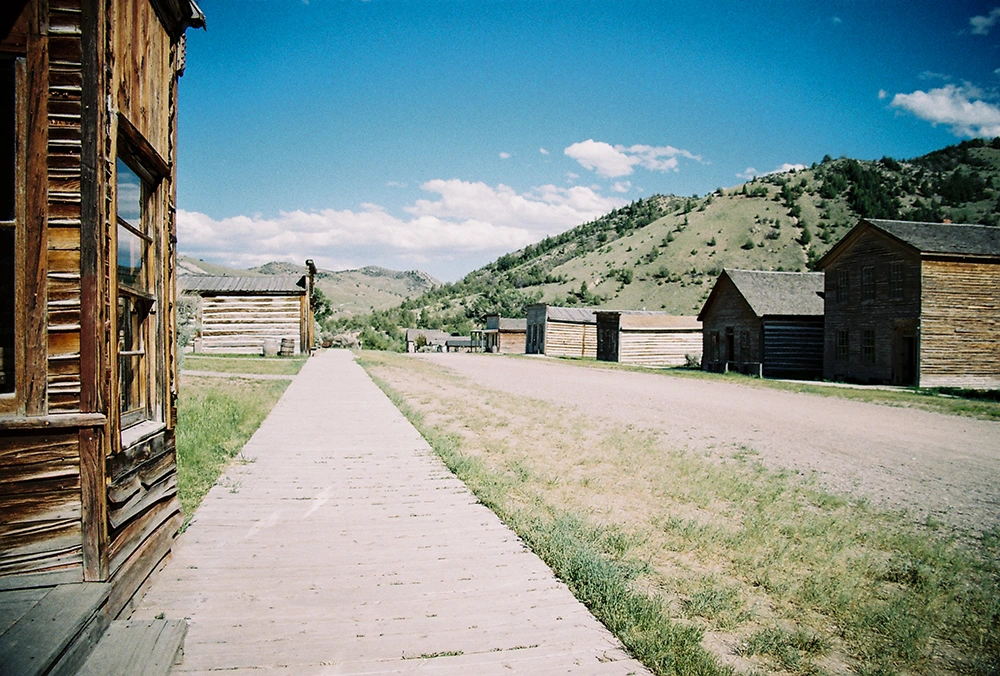
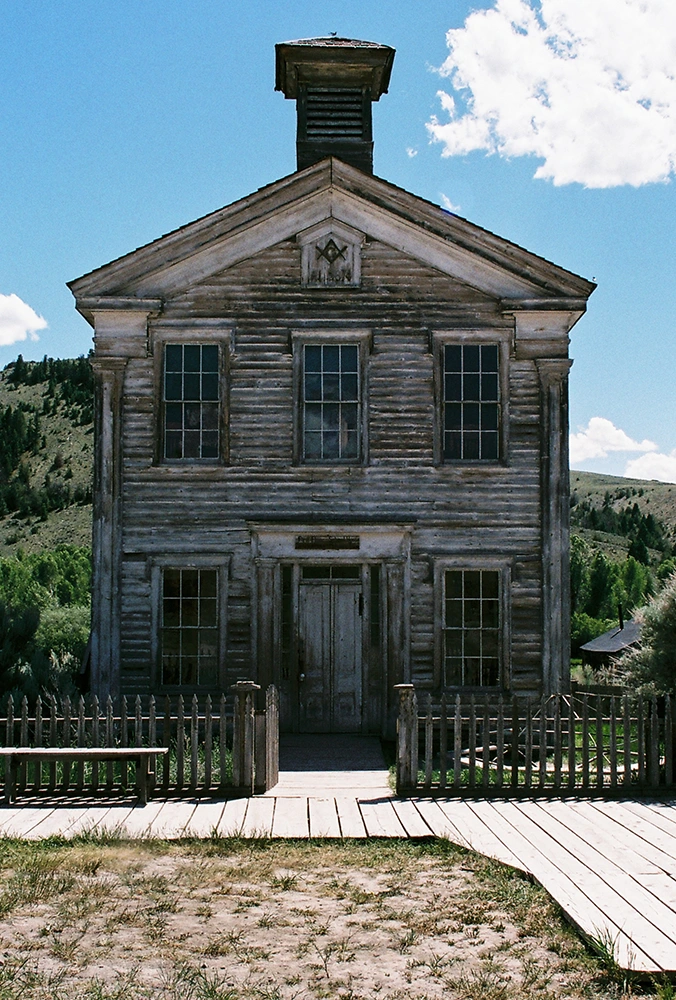
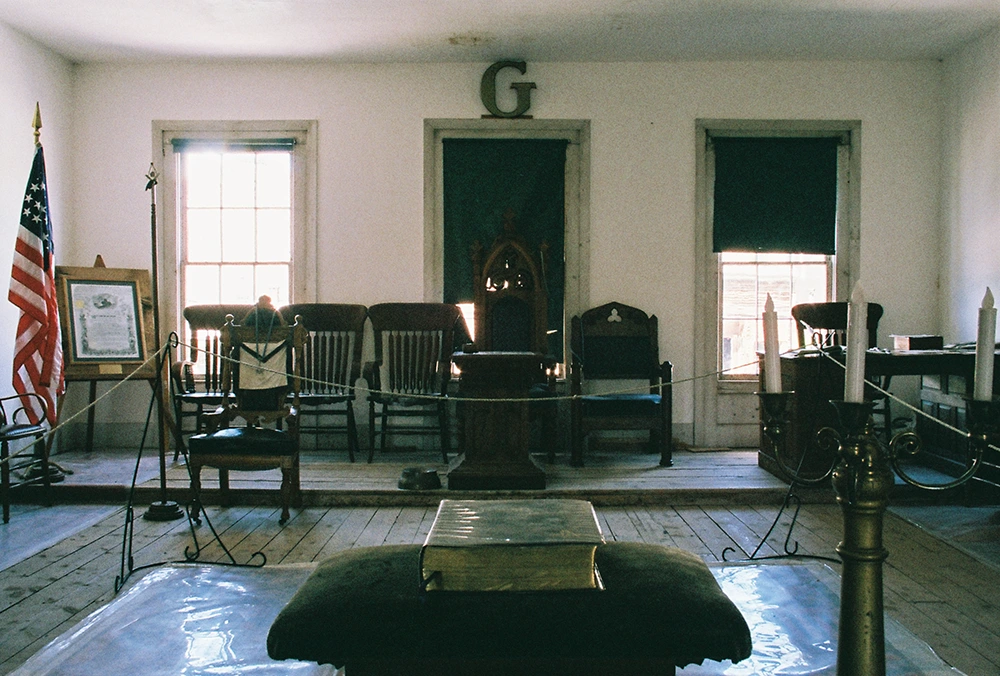
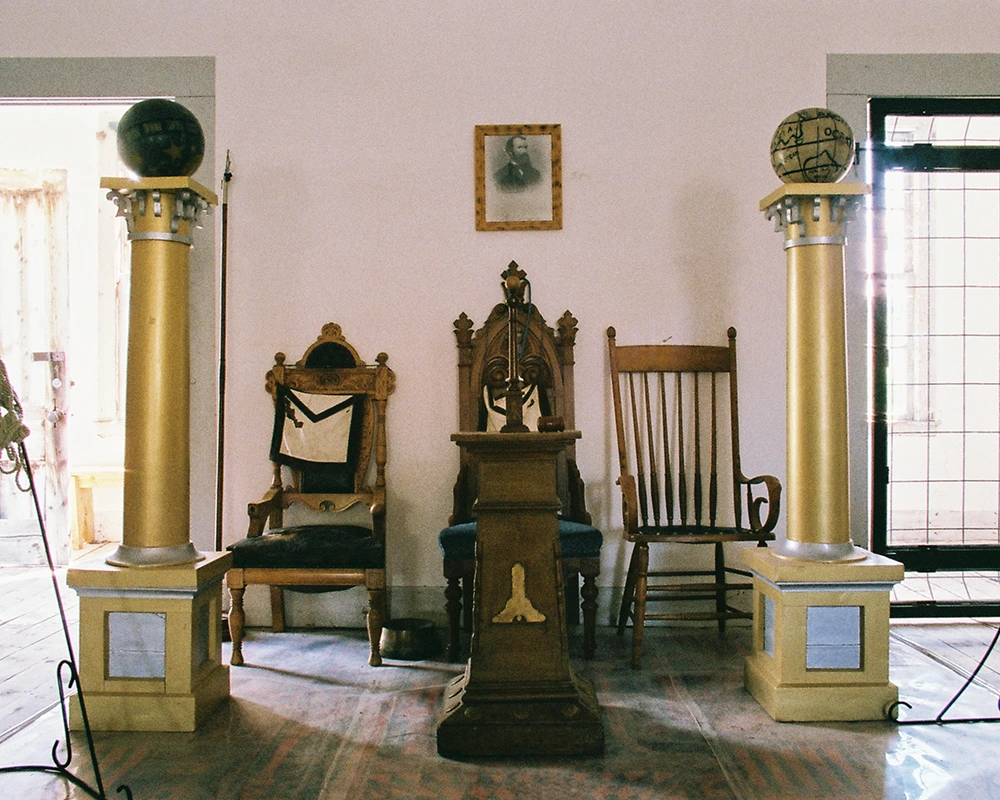
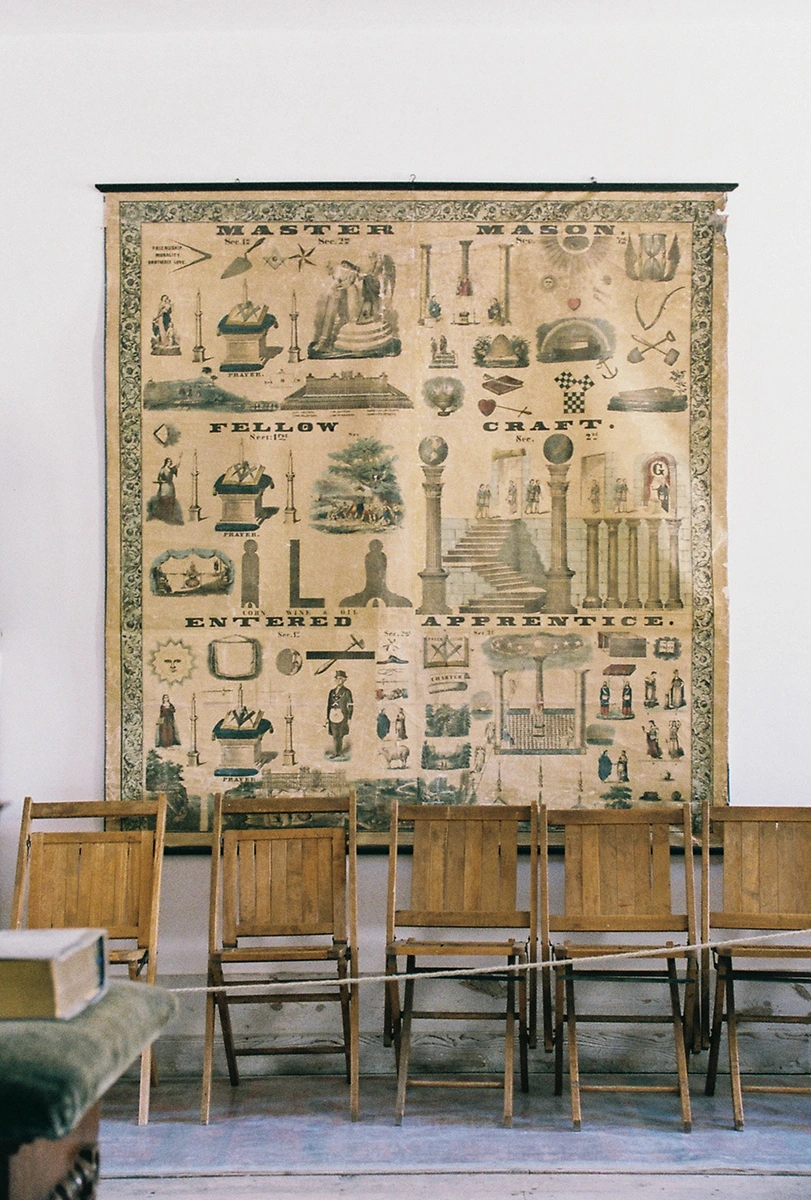
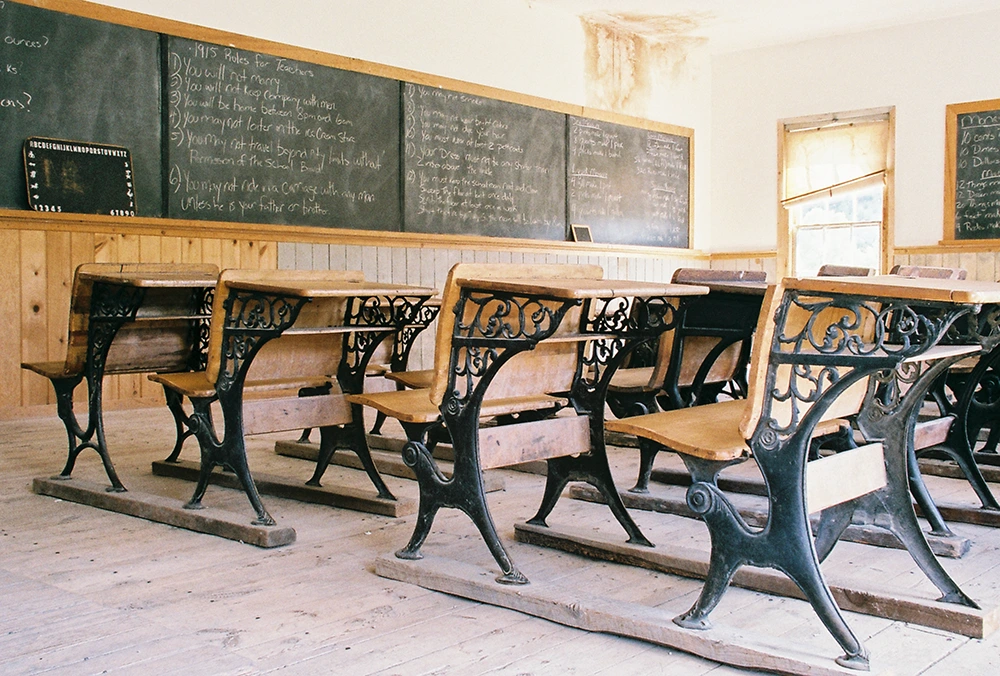
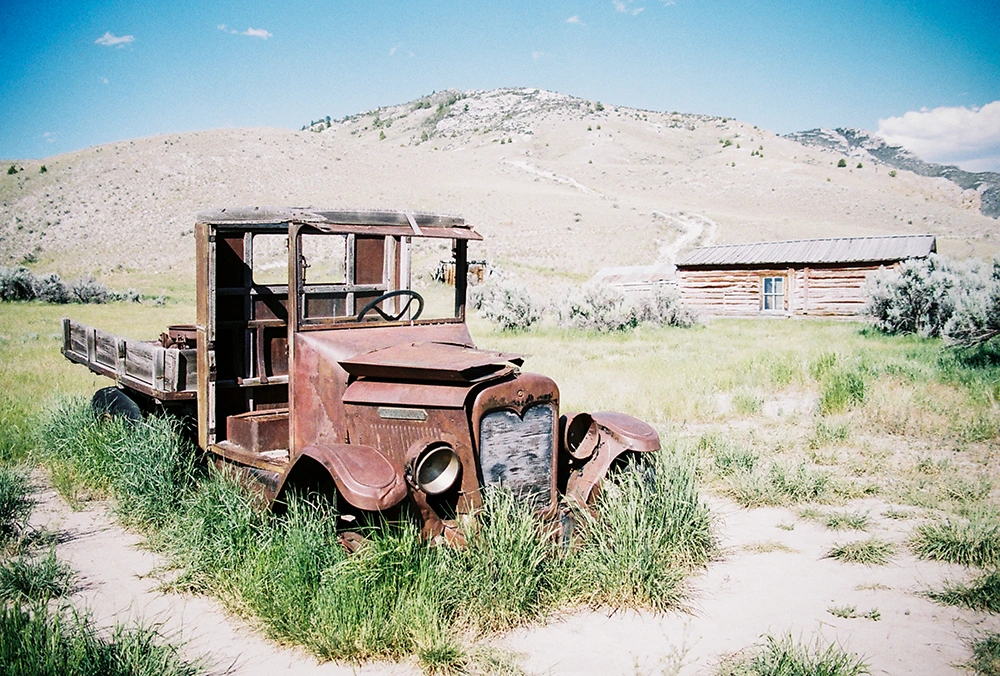
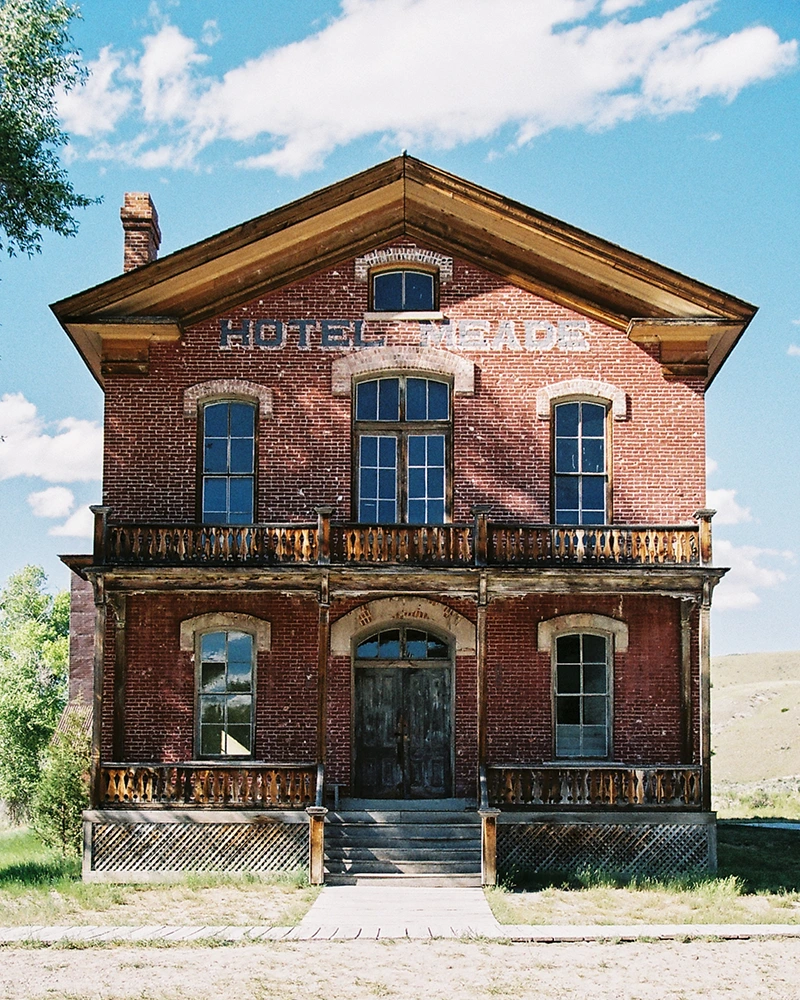
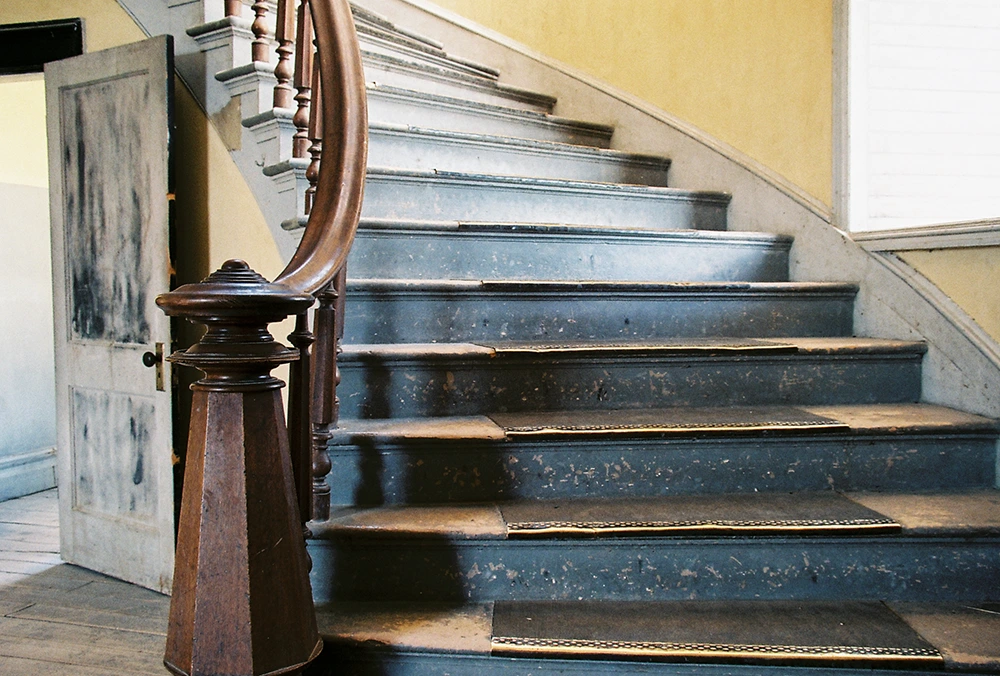
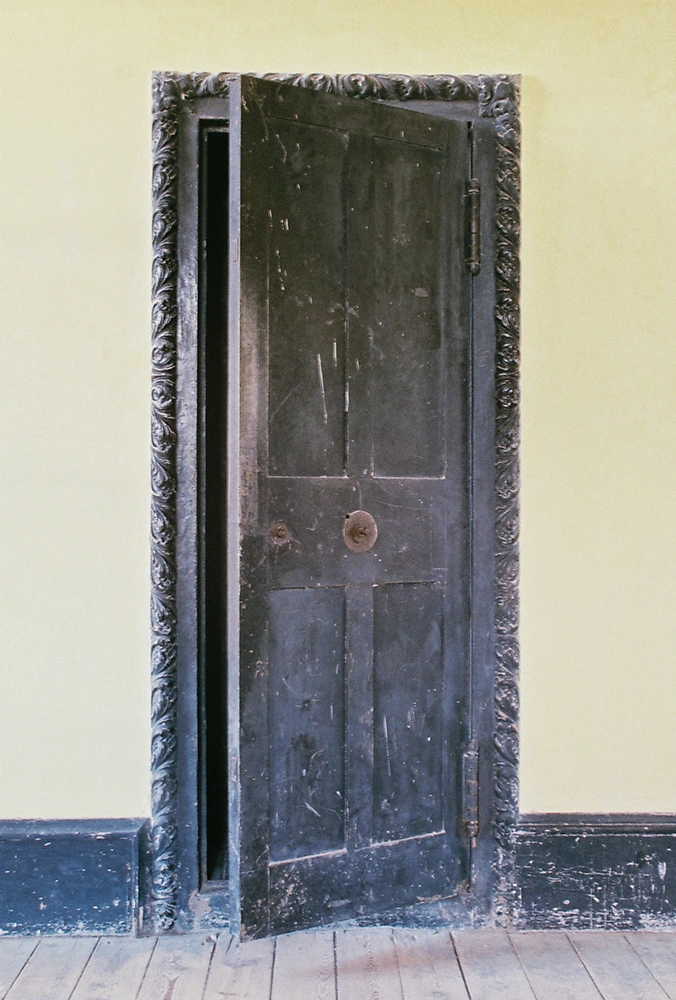
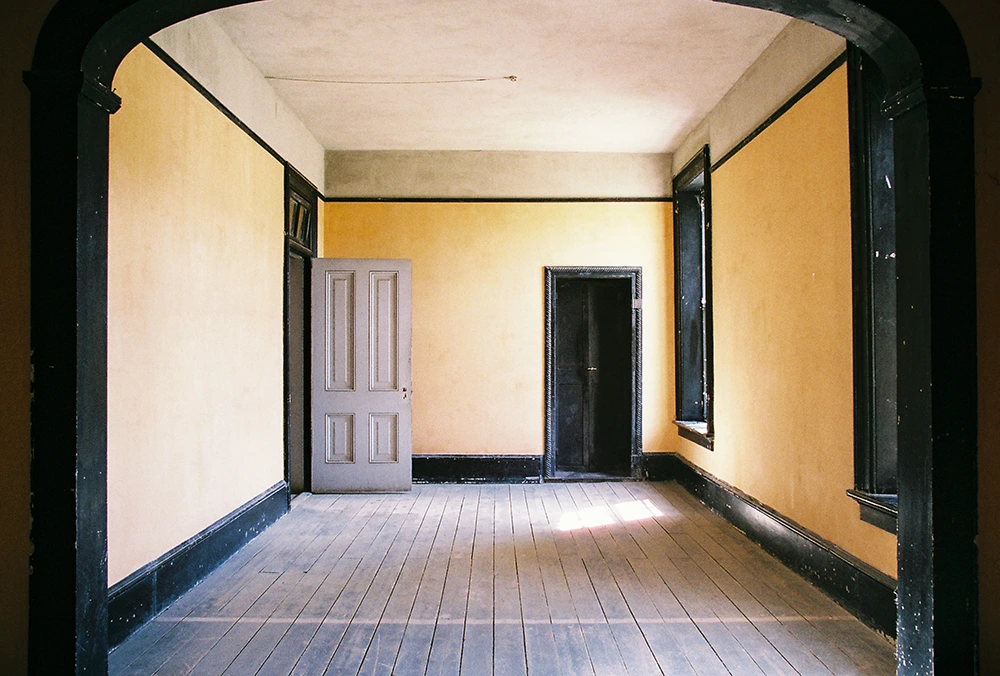
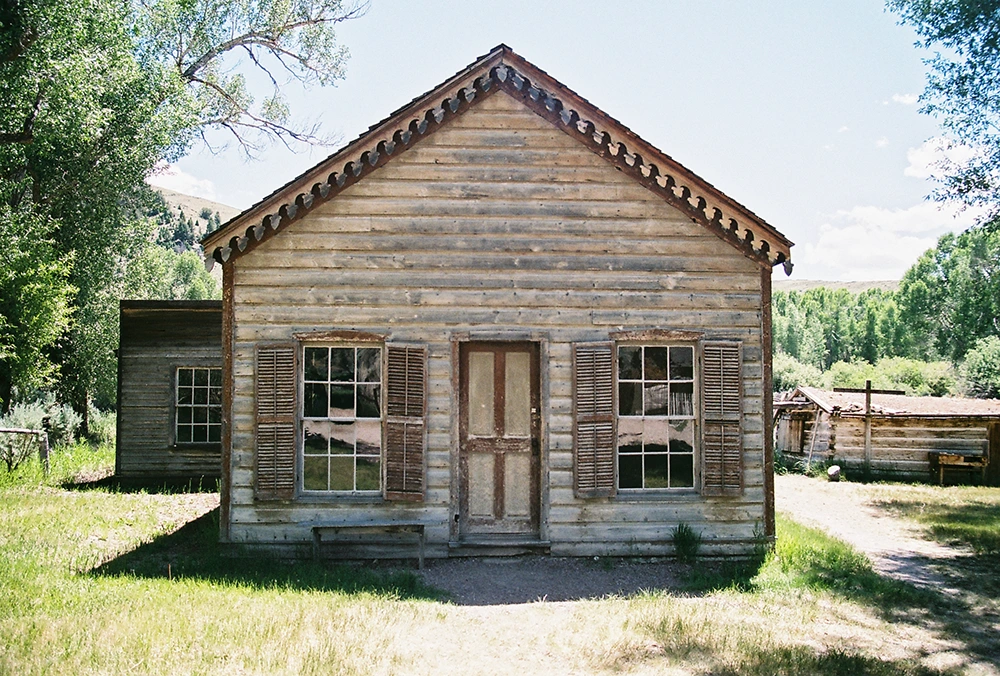
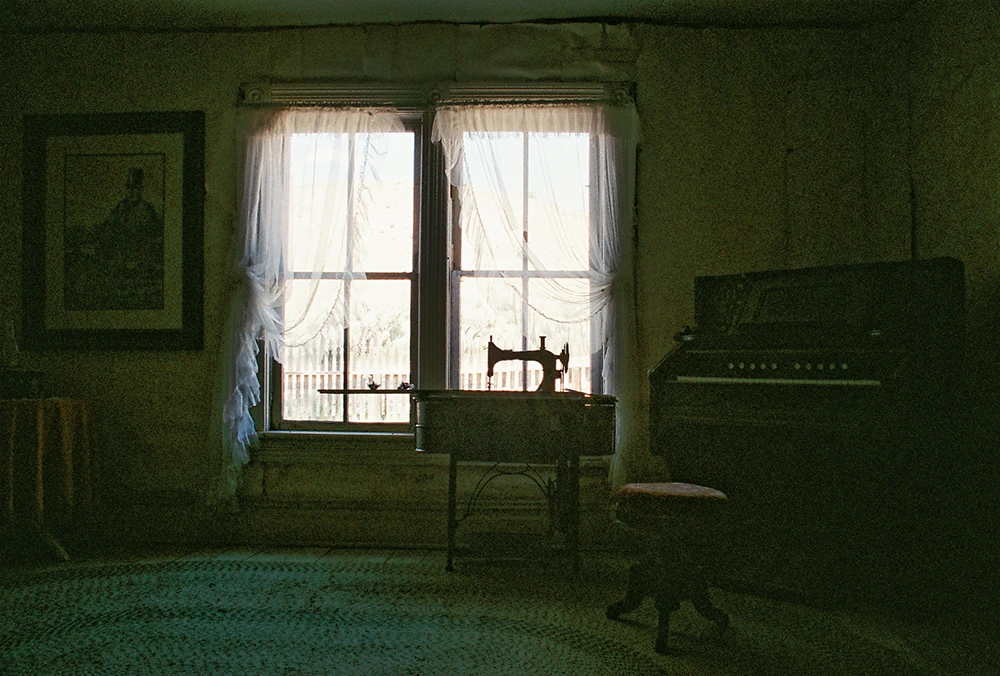
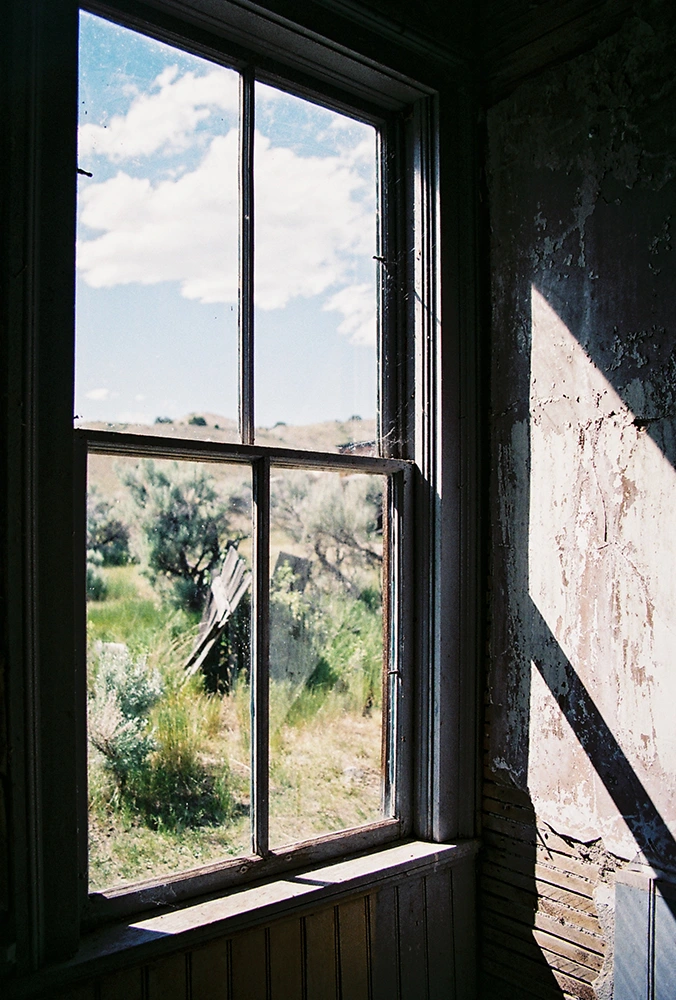

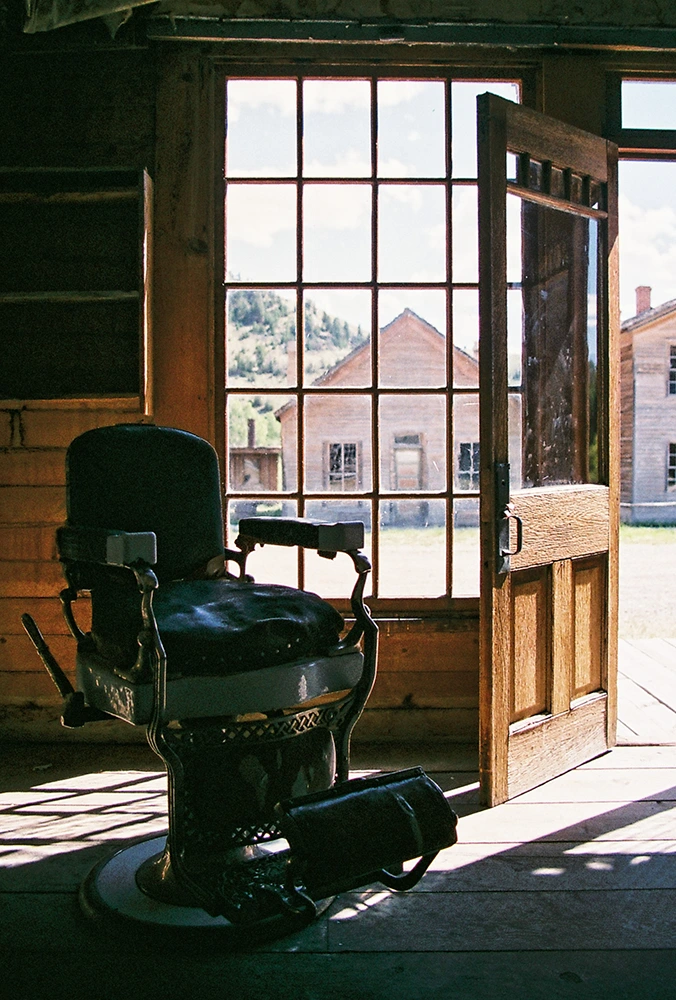
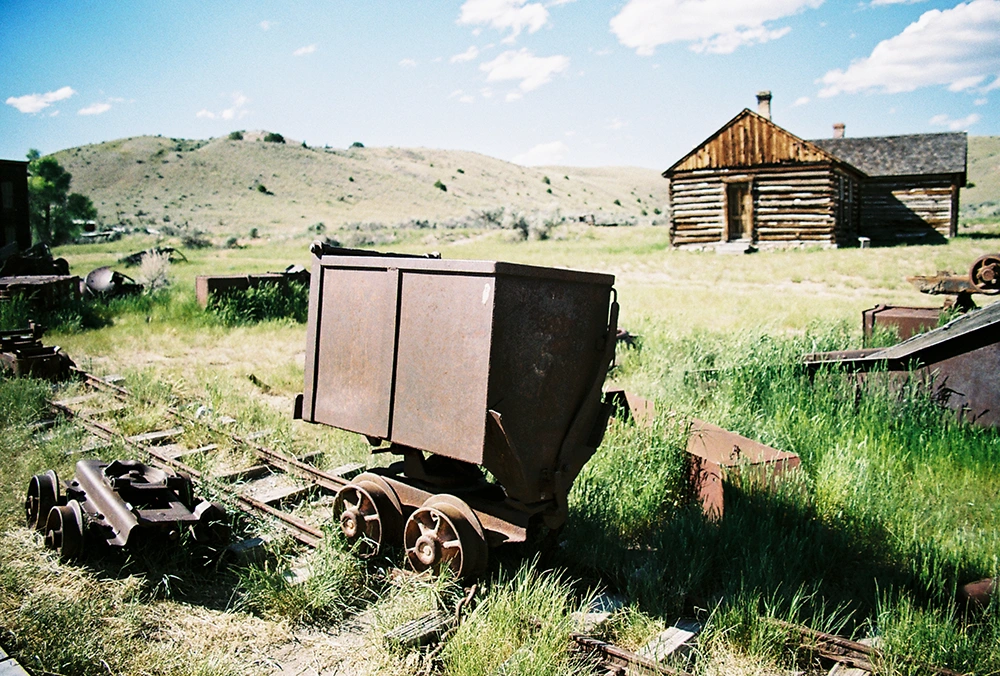
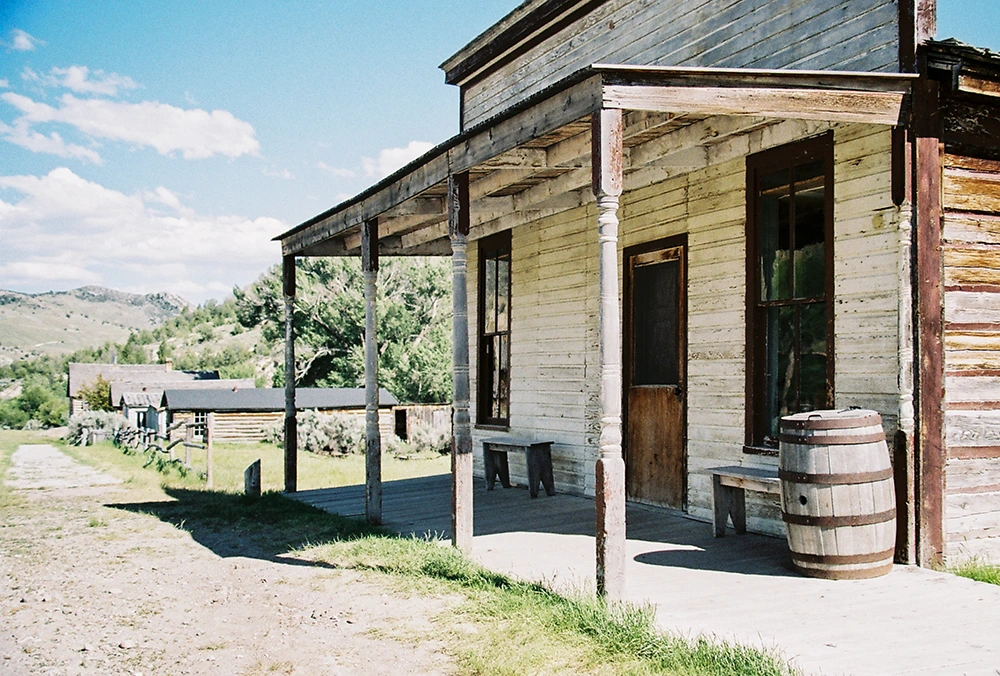
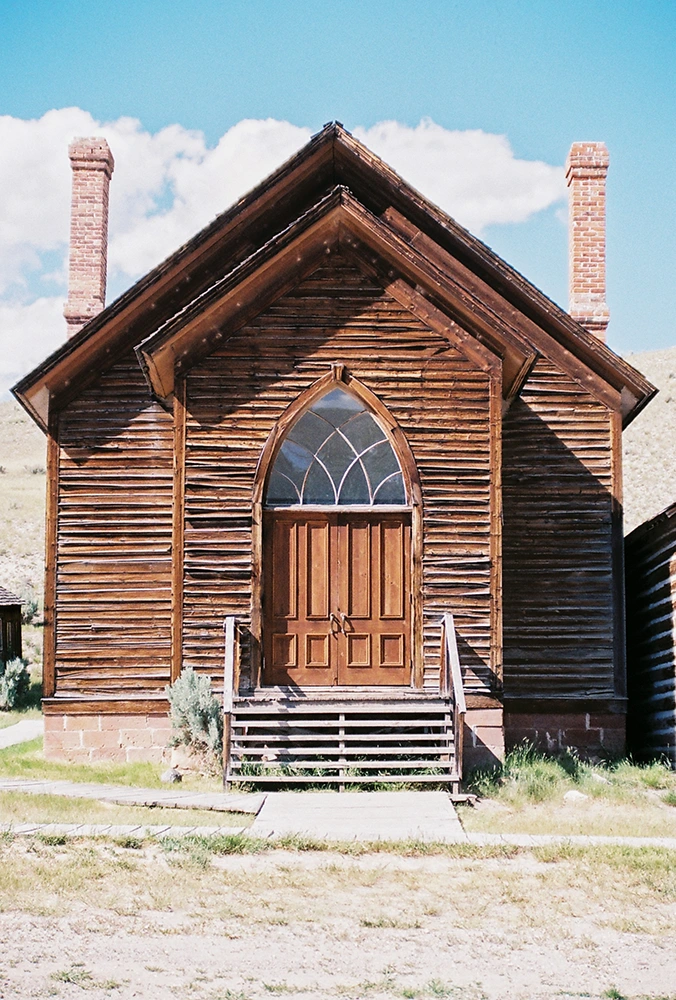
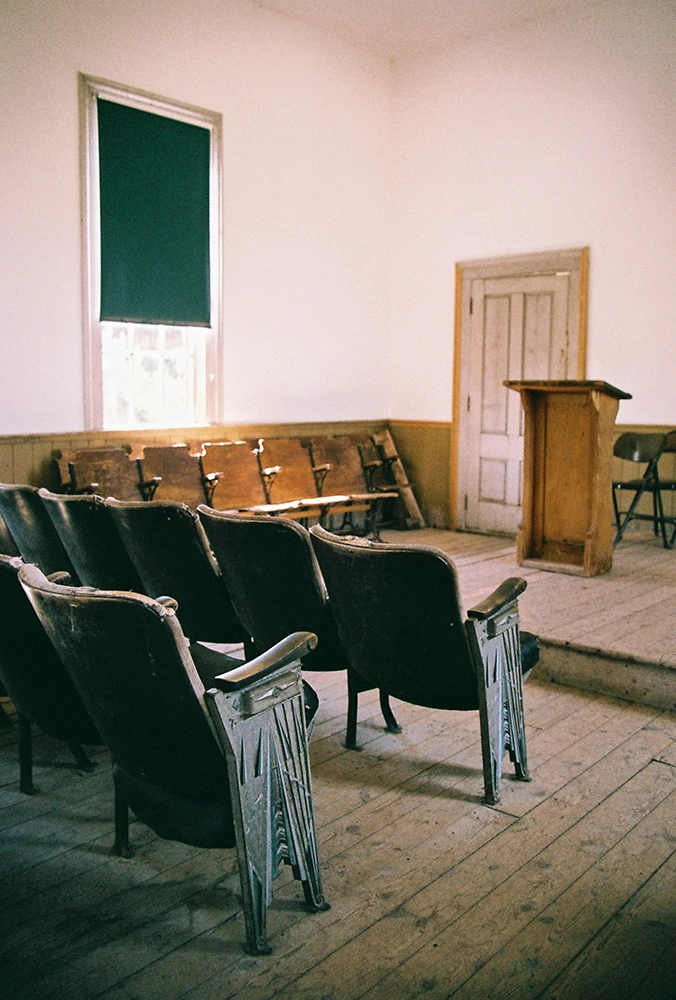
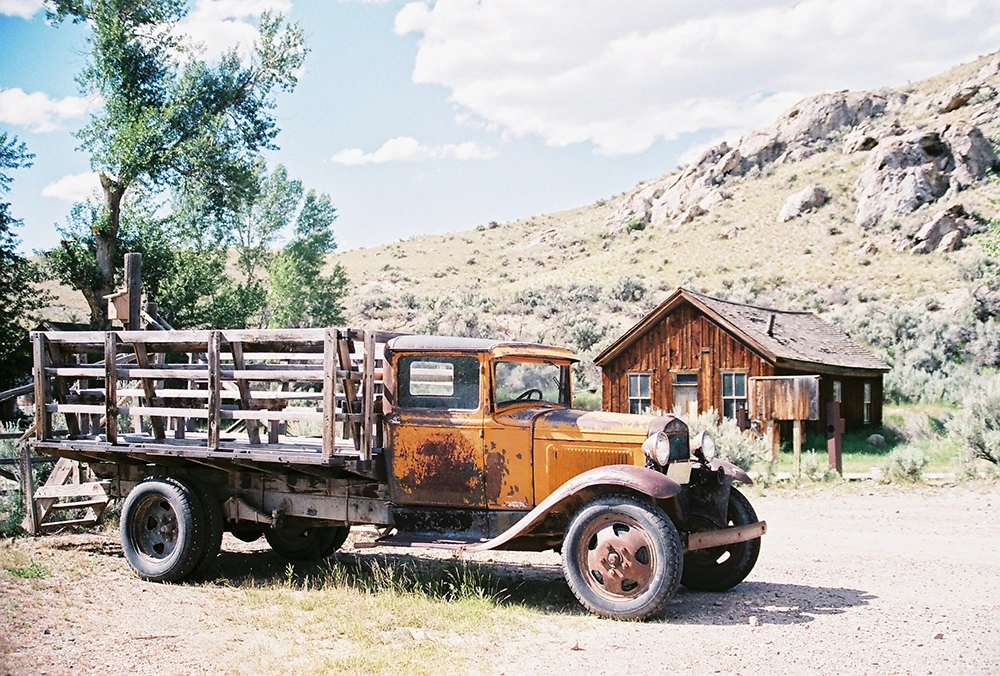
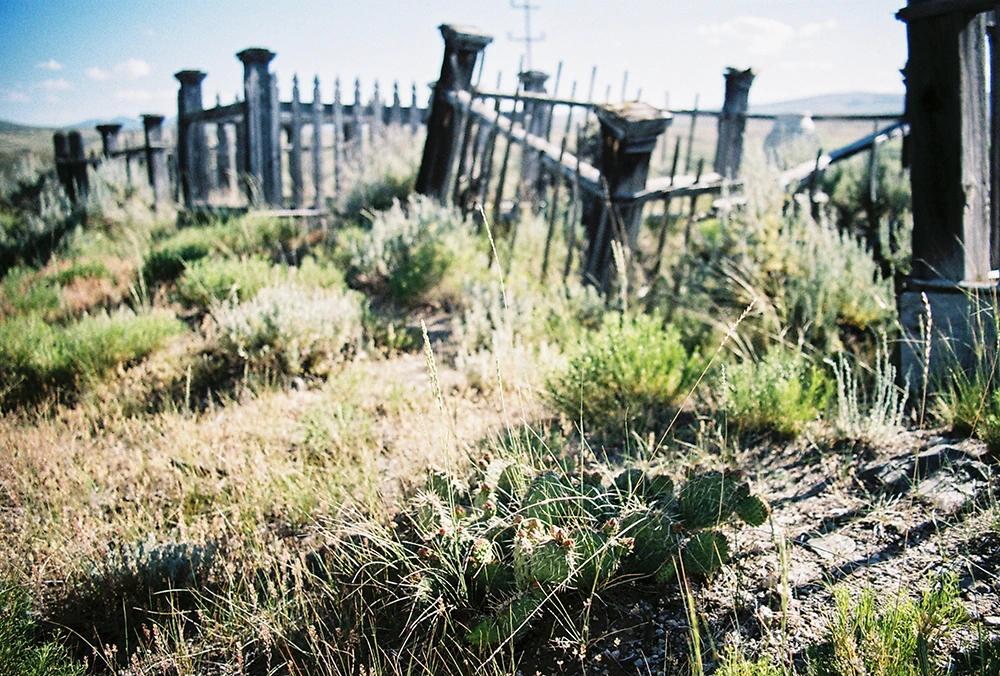
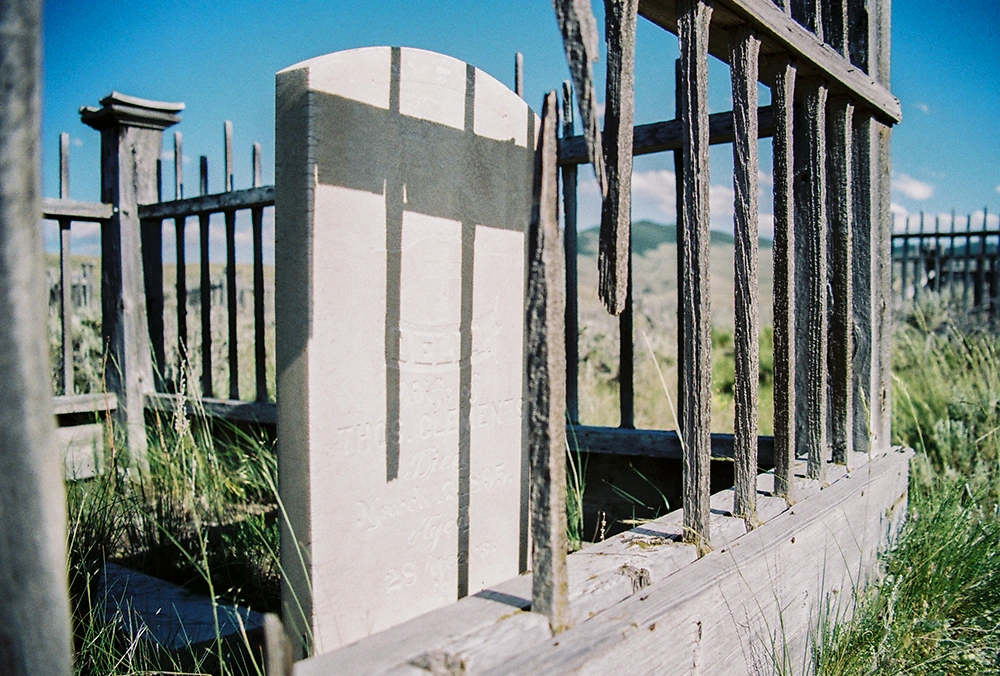
Commercial Ghost Town
This next ghost town is haunted by spooky tourists. Although it is curated and maintained as a collection, the buildings themselves along with most of their furnishings are authentic.
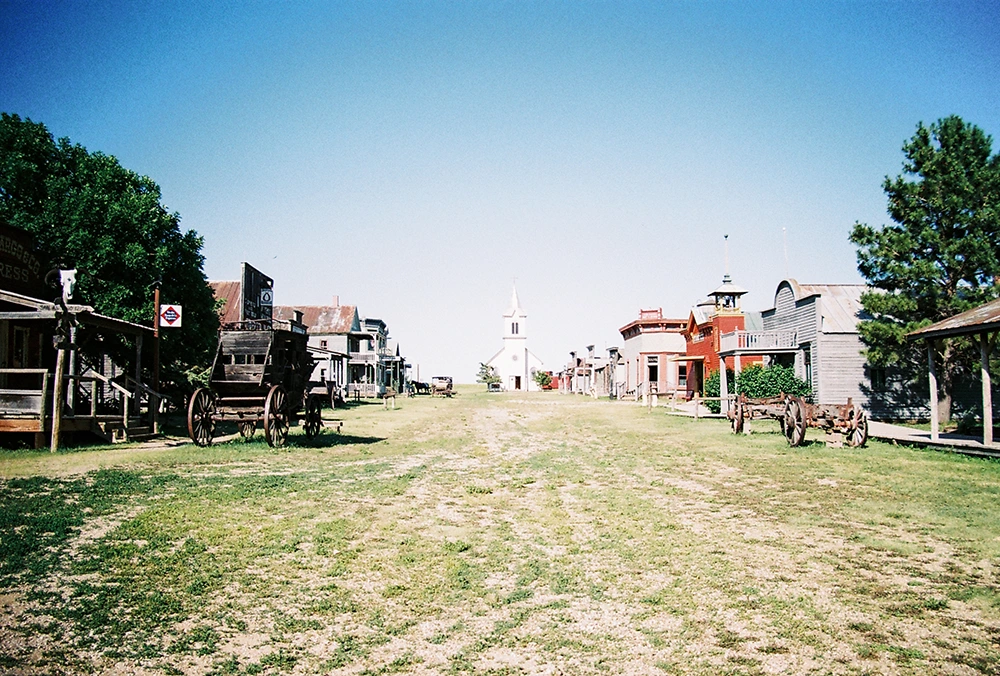
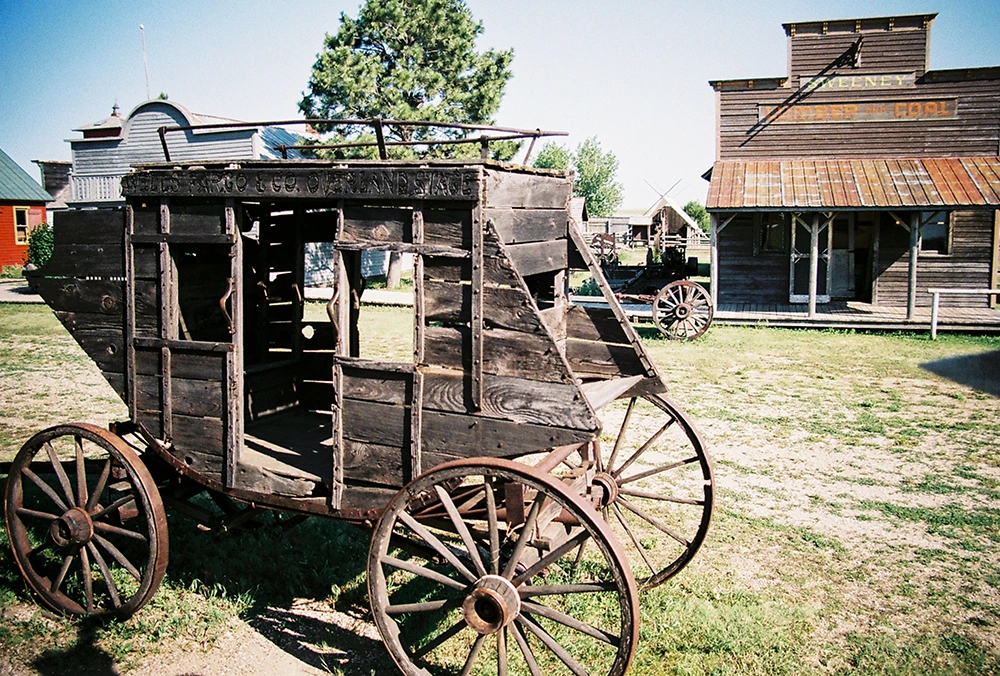
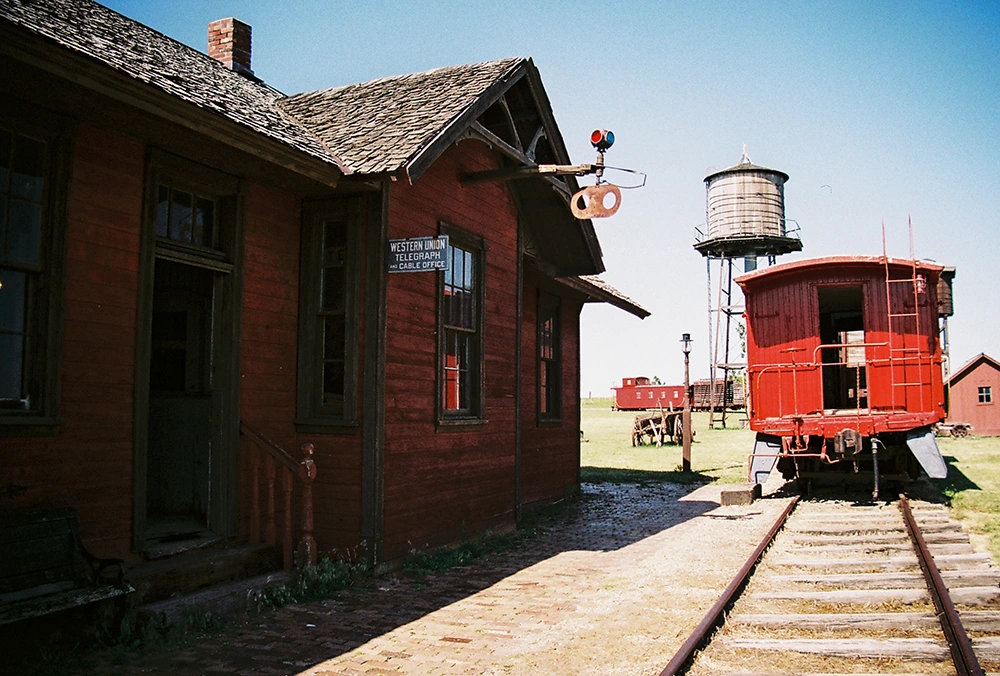
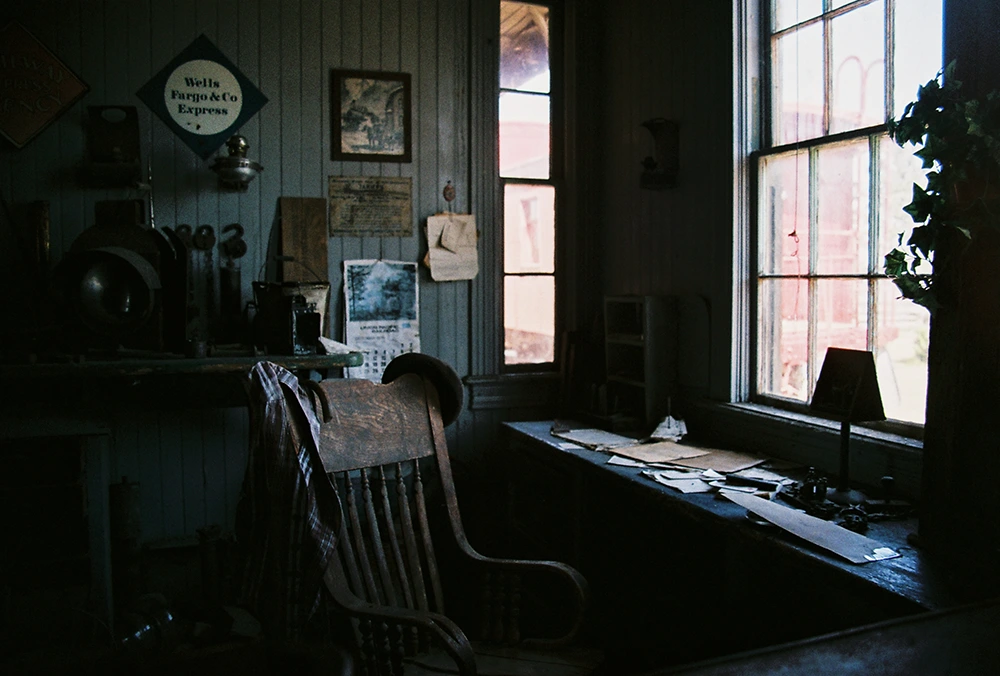
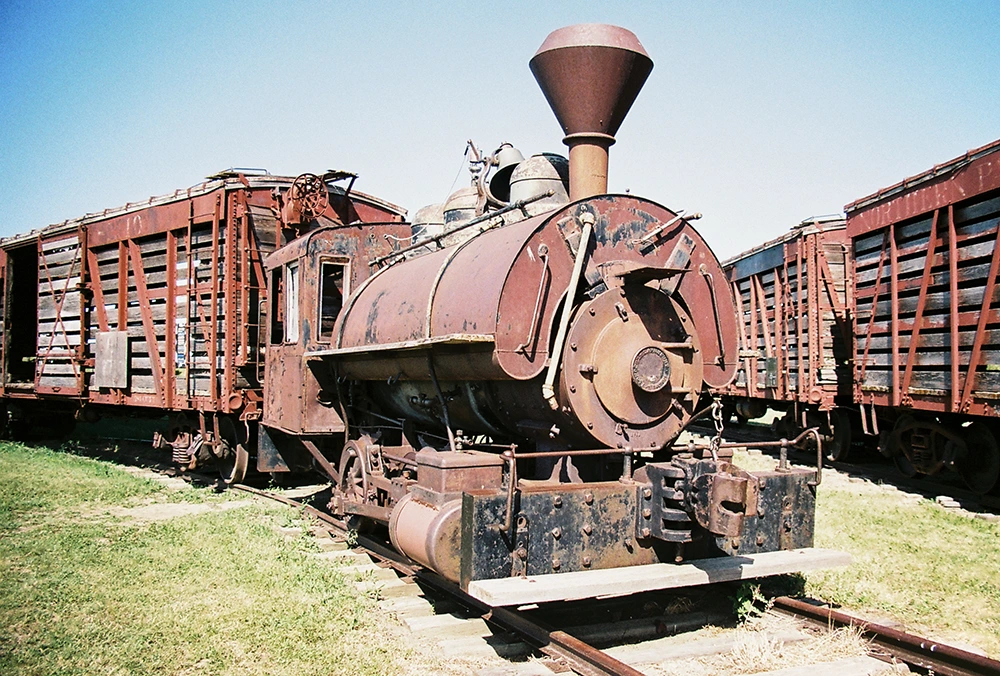
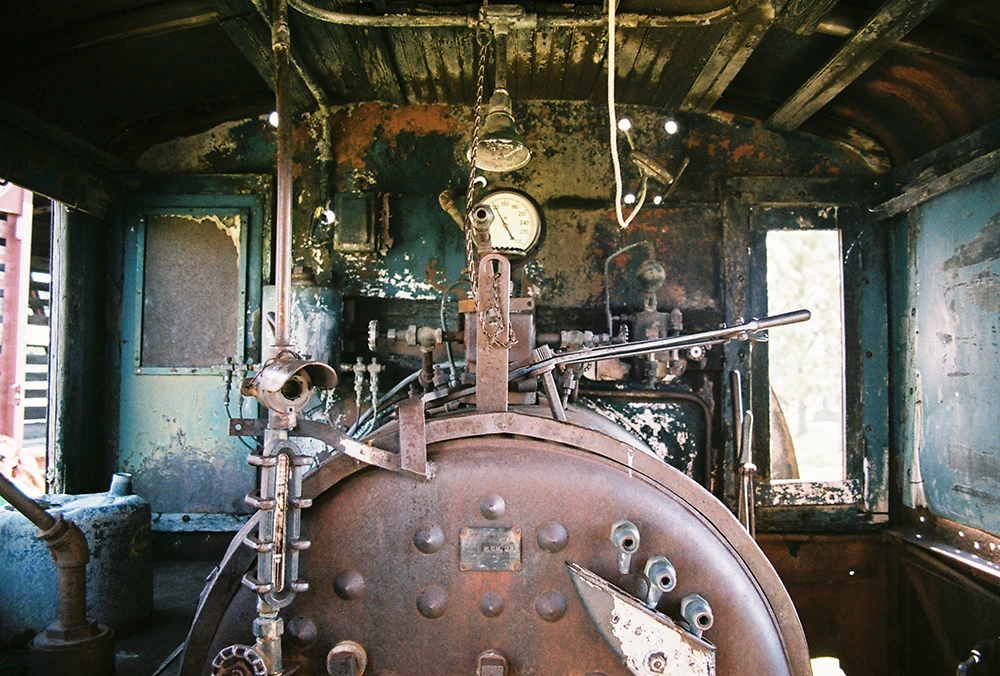
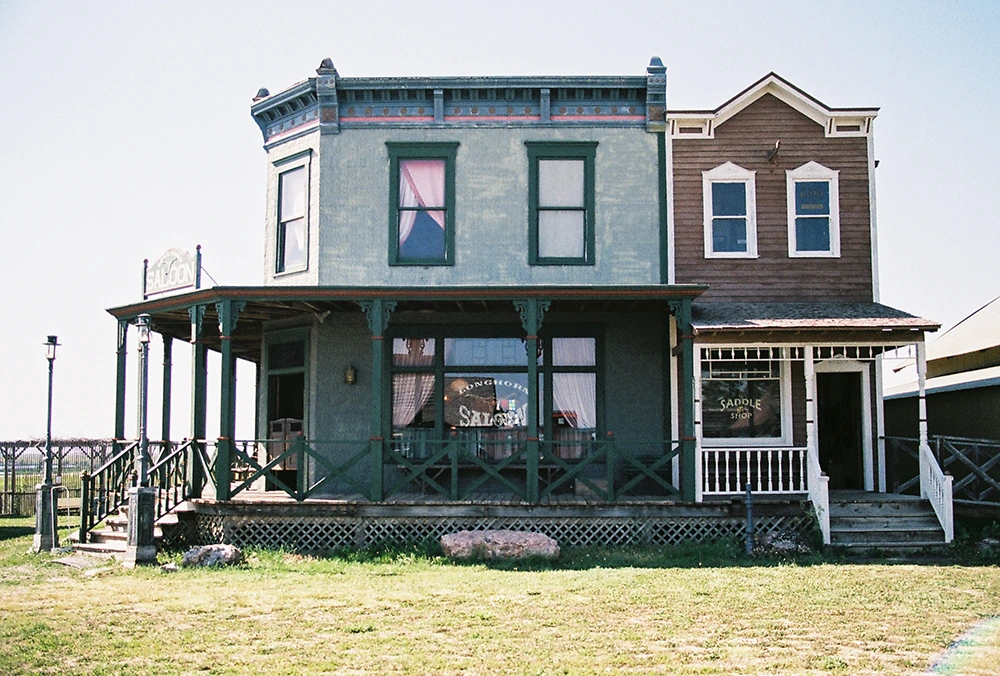
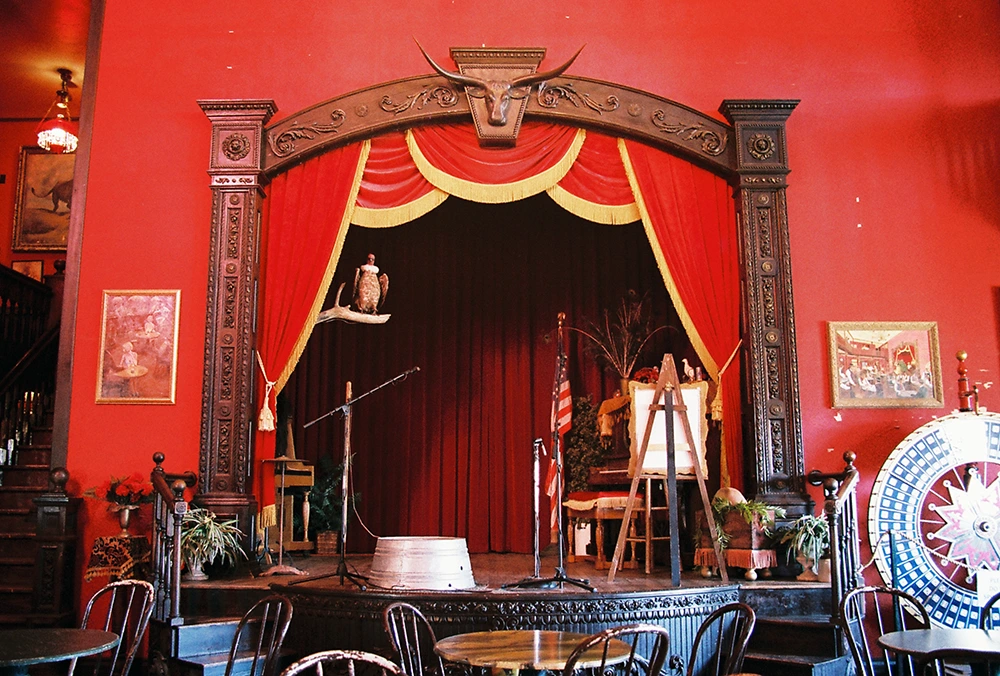
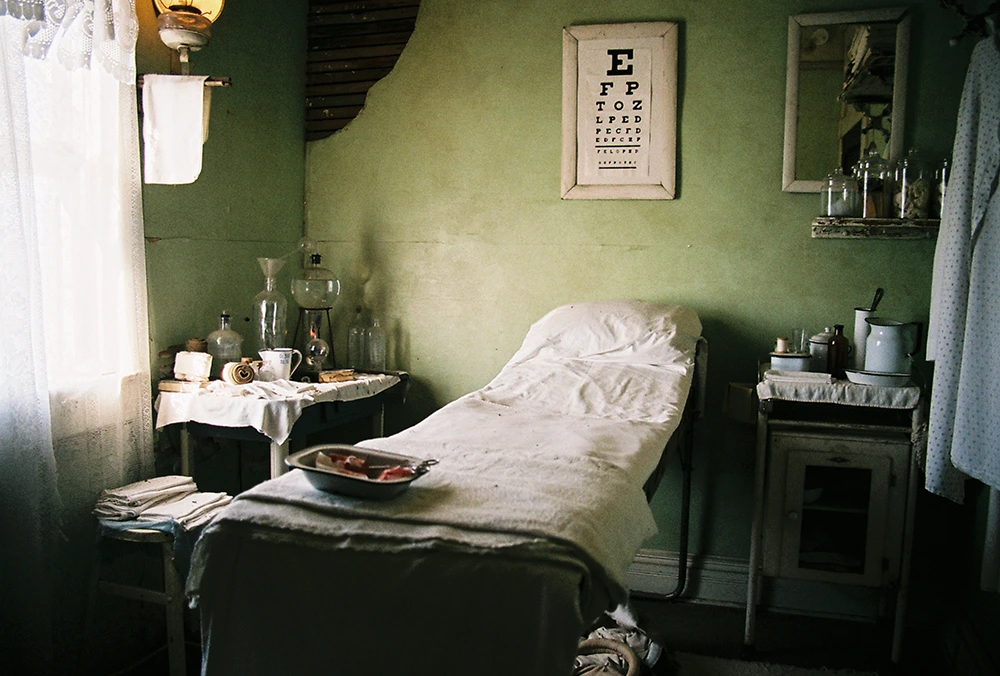
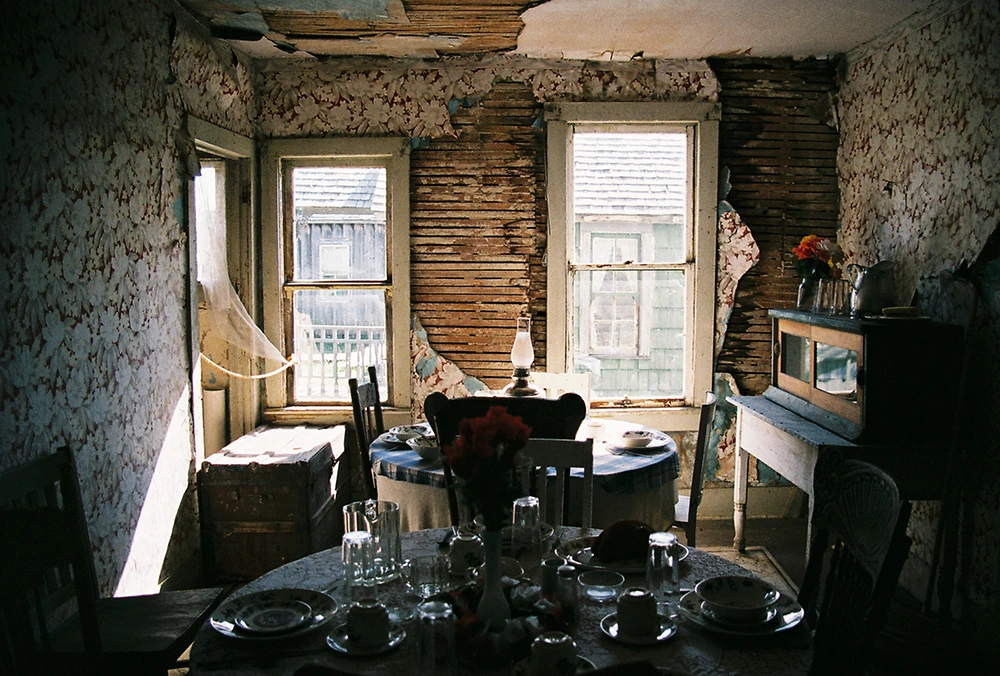
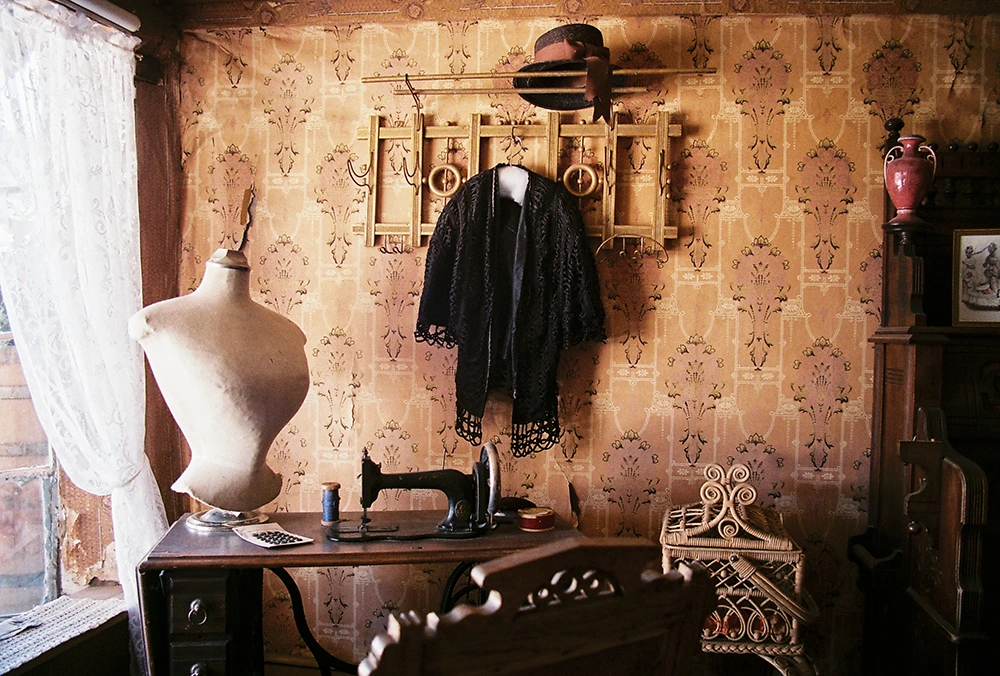
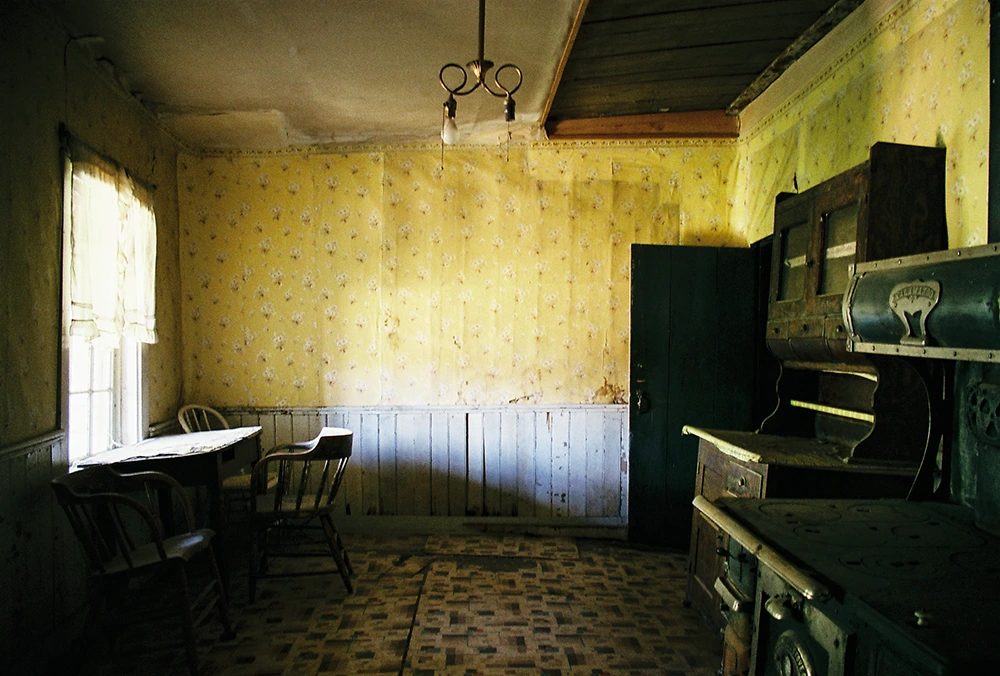
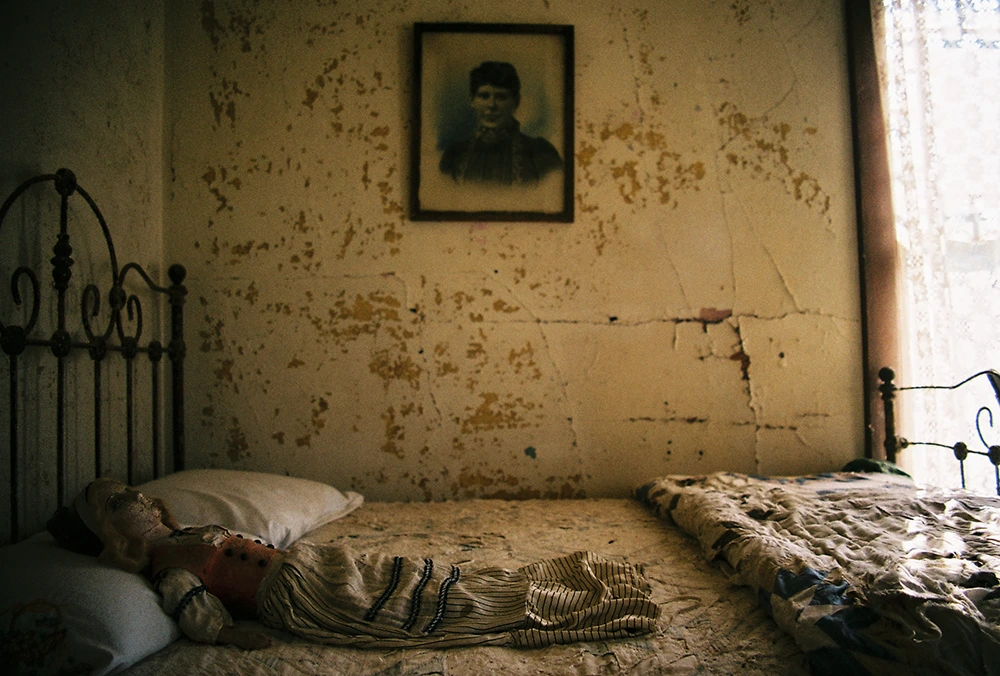
The last stop on the trip was Wyoming State Penitentiary. See it here in Part II.
We could have stayed on the trip another day but we had already seen the best of it and if I drove hard, we'd make it back home a day early, which would give us an extra day to relax before reality took over once more. So I drove for two solid days from Montana back to Saint Louis with minimal stops along the way. We got back late at night, completely exhausted.
NOTE: Most of these shots are very low quality digital scans of 35mm film, so they're not a very good representation of the quality of film. One of these days I'll get around to getting my own scanner and replacing these scans with better versions.
